


September 2023 Saskatchewan's Premier Cattle Industry Publication Beef Business Saskatchewan`s Premiere Cattle Industry Publication Working for Producers Publication Mail Agreement #40011906 A Saskatchewan Stock Growers Association Publication COMMERCIAL CATTLE EDITION Adair Sales & Marketing Company Inc. 306-773-0996 | info@adairreps.com 8 Weeks Saves 8% BAUMALIGHT.COM Pre-order your Baumalight generator now for delivery in 8 weeks and get an 8% discount
Endovac was first presented to me as an immune stimulant, and we started using it on commingled cattle coming from multiple high stress environments to our ranch. I saw a higher immune response in these cattle and started using Endovac on all of our cattle at all five locations. We have a 2,000 head cow/calf operation and 500 head of stockers with ranches in south Florida and south Georgia. Whenever calves go through the chute, they receive a shot of Endovac. We currently run between .5% and 1% mortality on our calves. And on top of all that, with the price, you can’t go wrong.
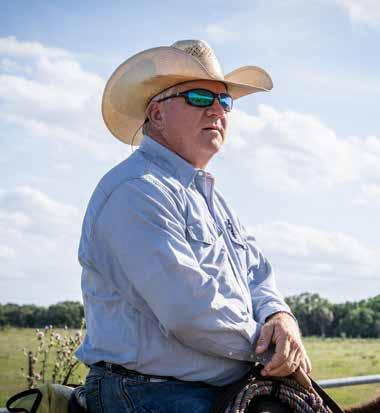
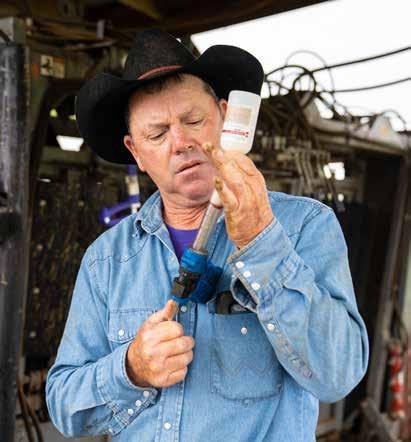 Matt Pearce, Pearce Cattle Company
Matt Pearce, Pearce Cattle Company
ENDOVAC-Beef has been a Game Changer for me. I run a good sized cow-calf operation in addition to starting cattle. 100% of my cattle get ENDOVAC-Beef. Since using ENDOVAC we don’t have to treat as many cattle for respiratory, or even other common problems like pinkeye and foot rot. I am getting my Pasteurella and the stimulant that makes the vaccine work better with ENDOVAC-Beef. If everybody knew what I knew, everyone would be using it!
Brad Haun, Haun Ranch

DUC Conservation Easements (CEs) pay approximately 30% of current land values, and have no restrictions on haying or grazing*. Contact us to find out how our CEs and other farm-gate programs increase your bottom line and put money back in your pocket: Call 1-866-252-3825 or email du_regina@ducks.ca ag.ducks.ca
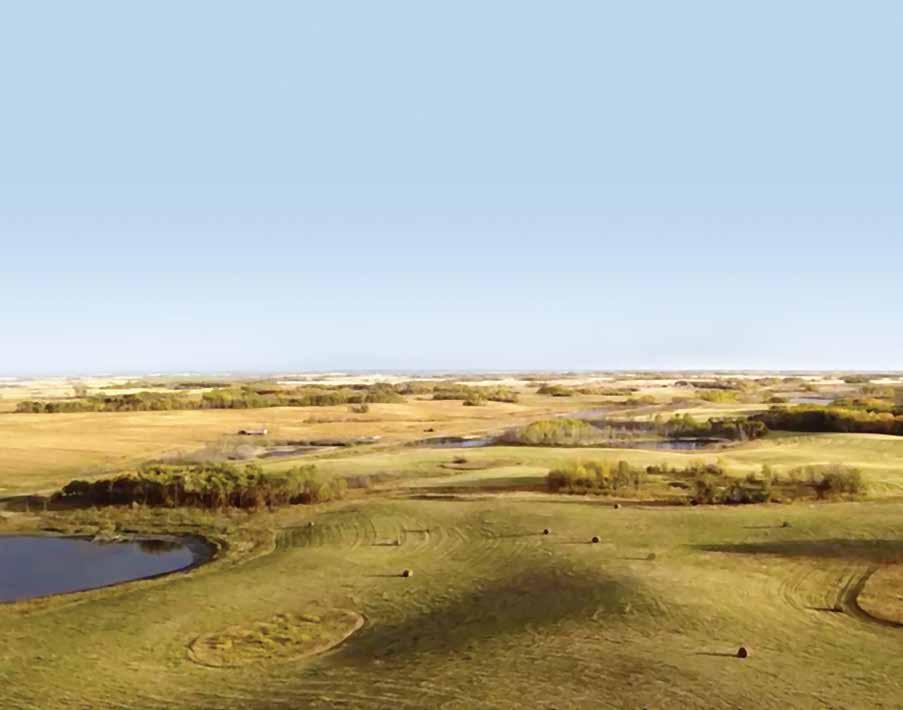
“A Ducks Unlimited Canada conservation easement hits all cylinders for our beliefs in conservation and for how our operation runs, including soil health and grazing. It was also a huge financial boost for our operation!”
– CHRIS AND JENNA HUBICK, STRASBOURG AREA RANCHERS AND DUC PROGRAM PARTNERS
*Some conditions apply. Contact DUC for details.
Proud to be your conservation partner

A Saskatchewan Stock Growers Association (SSGA) Publication

General Manager: Chad MacPherson
Box 4752, Evraz Place, Regina, SK S4P 3Y4
Tel: 306-757-8523 Fax: 306-569-8799
Email: gm@skstockgrowers.com
Website: www.skstockgrowers.com
Managing Editor: Kori Maki-Adair
Tel: 403-680-5239 Email: kmaa@shaw.ca
Agri-business Advertising Sales: Diane Sawatzky
Tel: 306-716-4271 Email: sales@skstockgrowers.com
Livestock Advertising Sales:
Tel: 306-757-8523 Email: livestocksales@skstockgrowers.com
Subscriptions
Box 4752, Evraz Place, Regina, SK S4P 3Y4
Tel: 306-757-8523
Fax: 306-569-8799
Email: office@skstockgrowers.com
Subscription Rate: One year $26.50
(GST included) Published five times per year
Design and Layout: Jackson Designs | Candace Schwartz
Tel: 306-772-0376 Email: candace@jacksondesigns.ca
Prairie Conservation Action Plan (PCAP)
Manager: Carolyn Gaudet
Box 4752, Evraz Place, Regina, SK S4P 3Y4
Tel: 306-352-0472
Email: pcap@sasktel.net
Fax: 306-569-8799
SSGA reserves the right to refuse advertising and edit manuscripts. Contents of Beef Business may be reproduced with written permission obtained from SSGA's General Manager, and with proper credit given to Saskatchewan Stock Growers Association. Articles submitted may not be the opinion of SSGA. SSGA assumes no responsibility for any actions or decisions taken by any reader from this publication based on any and all information provided.
Publications Mail Agreement #40011906
Return undeliverable Canadian addresses (covers only) to:
Saskatchewan Stock Growers Association Box 4752, Evraz Place, Regina, SK S4P 3Y4
• Kori Maki-Adair
• Dr. Tammy Nemeth
• Jason Pollock
• Leah Switzer
• Blake Weiseth
• Garth Woods
•
5 www.skstockgrowers.com | ©BEEF BUSINESS | SEPTEMBER 2023 Contents
Did you know that SSGA is Saskatchewan's oldest agricultural association? ?
6 Interprovincial and International Cattle Marketing 7 Drought Relief Straw Drop 8 Stock Growers Welcome AgriRecovery Announcement 9 Cleanfarms' Unwanted Pesticides and Old Medications Events across SK 10 Recommended Read: Tales from The Minor Ranch 12 SSGA Launches Member Benefits Marketplace MARKETS AND TRADE 14 Livestock Marketers of Saskatchewan Directory 16 Retail Meat Price Survey 18 Weekly Market Charts 19 Saskatchewan Feedlot Directory
20 Beef Market Outlook 2023 Fall Run 22 Clear View Angus: Conserving Habitat to Sustain A Way of Life 24 Satellite-Based Forage Insurance Pilot Prepares for Launch 28 New Global Language Impacting Livestock Producers SCIENCE AND PRODUCTION 30 Active Missing Livestock Files 31 Update on Annual Report and Reminder 34 Water Infiltration Research: After Two Years, A Story Unfolds 36 Managing a Short Feed Supply ASSOCIATION NEWS, REPORTS AND EVENTS 37 Honourary Lifetime Membership Goes to Sherri Grant 38 SSGA President's Report 40 SSGA 2023 Annual General Meeting Resolutions 42 Wilma Rose Switzer Celebration of Life STEWARDSHIP 46 Plant Species at Risk Found in Sandy Soil 48 Saskatchewan Stock Growers Foundation Summer Update BUSINESS 50 Calendar 51 Advertiser Index 52 Business Directory • Terry Bedard
Garner Deobald
Carolyn Gaudet
Mindy Hockley
Maddy Lazurko
INDUSTRY NEWS
FEATURES
•
•
•
•
Chad MacPherson
This magazine is printed on paper that is comprised of 50% re cycled pa per a nd 2 5% p ost-consumer w aste. I t i s acid-free, elemental chlorine-free and is FSC certified T le h c i y s c M e a R g e a s z a in le e P Follow us on: fb.com/skstockgrowers @SK_StockGrowers Cover photo courtesy of: Janelle Liebreich, Merit Cattle Co. Radville, Saskatchewan
Contributors
Interprovincial and International Cattle Marketing
Saskatchewan is home to Canada’s second largest beef cattle herd. But once we have raised them, where are they marketed and what is required?
All livestock movement requires a manifest. Livestock that move from Saskatchewan to another province or country require a permit from Livestock Services of Saskatchewan (LSS). Cattle can leave the province without a permit and only a manifest, if they are headed directly to a point in Alberta or Manitoba that has livestock inspection, such as an auction market or feedlot.
For 2022 movement within Canada, a large portion of cattle leaving the province went to our neighbours in Alberta, followed by Ontario and Manitoba.
For British Columbia, Quebec, and the Atlantic provinces, the number of cattle moving there was much smaller.
In 2022, all the cattle that moved to Atlantic Canada were breeding stock—bulls, heifers and cows.
In 2022, one-quarter of the animals that moved to British Columbia were heifers less than 500 pounds, followed by breeding cows which were 17 per cent of the total moved.
Quebec was taking 0.30 to 0.50 per cent of the permitted animals for 2021 and 2020, but it fell to 0.04 per cent in 2022. When Alberta was struggling during the pandemic, more animals moved to Quebec.
In 2022, several head of breeding stock (i.e., bulls, heifers) were exported outside of North America in April.
Alberta
Alberta is Saskatchewan’s main livestock destination, accounting for an average of more than 70 per cent of the animals moving out of Saskatchewan.
Seventy-three per cent of the animals
Terry Bedard
permitted to move out of province traveled to Alberta in 2022, down from 76 per cent in 2021.
In 2022, 15 per cent of the animals that moved to Alberta were heifers greater than 700 pounds, followed by heifers 500 to 700 pounds (11.2 per cent), and steers greater than 800 pounds (11.0 per cent). Things were a bit different in 2021.
While heifers greater than 700 pounds were still the top category at 14 per cent, slaughter steers were the second at 13 per cent, with steers greater than 800 pounds at 12 per cent. Last year showed a reduction in heifers kept for breeding.
Most cattle move to Alberta in the fall. In 2022, 47 per cent of the cattle were moved to that province in the October to December time frame.
Manitoba
Manitoba is the fourth most popular destination, taking more than five per cent of the animals.
In 2022, 35 per cent of the animals that moved to Manitoba were steers less than 600 pounds, followed by steers 600 to 800 pounds (19 per cent) and heifers 500 to 700 pounds (12 per cent). The majority
of the cattle moved to Manitoba in the October to December time frame.
Ontario
Ontario was the second most popular destination for 2021 and 2020, but it fell to third in 2022 with nine per cent of the cattle permitted traveling there. When Alberta plants were struggling during the pandemic, more animals moved to plants in Ontario. It is likely we are seeing a re-setting to more “normal” inter-provincial flows.
In 2022, more than one-third (38 per cent) of the cattle that moved to Ontario were steers, 600 to 800 pounds, followed by steers less than 600 pounds at 24 per cent of the total. These were also the top two categories in 2021, with 36 per cent and 29 per cent respectively. Most of the cattle moved to Ontario in October and November.
United States
On average, seven to eight per cent of the permitted cattle were going south in 2021 and 2020, but the percentage moved up to 12 per cent in 2022. This is also likely a return to more normal flows as exports were curtailed during the pandemic.
6 | ©BEEF BUSINESS | www.skstockgrowers.com SEPTEMBER 2023 INDUSTRY NEWS
Destination Province 2022 2021 2020 Five-year average British Columbia 1,359 1,822 1,698 1,523 Alberta 852,600 985,675 879,567 922,977 Manitoba 73,688 80,834 71,259 67,579 Ontario 106,873 116,930 120,417 112,699 Quebec 473 4,103 5,328 6,766 Nova Scotia 9 54 3 12 New Brunswick 2 6 5 3 Prince Edward Island 2 67 1 21 Newfoundland and Labrador 0 0 0 0 United States 138,978 104,986 81,893 87,649 Export other than US 3 25 11 6 Feedlots in Saskatchewan 95,142 84,693 110,371 123,115 Total Cattle Movement from Saskatchewan
In 2022, 29 per cent of the cattle that moved south to United States were slaughter cows, followed by heifers greater than 700 pounds at 25 per cent of the total. Last year, February and March were the busiest months for live cattle exports to United States.
In 2022, the two busiest months of Saskatchewan cattle traveling to United States were February (19 per cent) and March (13 per cent). In 2021, the two busiest months were November (15 per cent) and December (13 per cent).
Livestock Services of Saskatchewan plays an important role in animal identification by providing livestock inspection services, administering brand registration and livestock dealer licensing. Thank you to the LSS staff and brand inspectors for the excellent job they do, and for providing these statistics.

Drought Relief Straw Drop
To address the ongoing drought, Saskatchewan Stock Growers Association (SSGA) has partnered with Saskatchewan Forage Seed Development Commission (SFSDC) and Saskatchewan Alfalfa Seed Producers Development Commission (SASPDC) to facilitate a forage straw drop among ag producers in Northeast Saskatchewan.
The SSGA, SFSDC and SASPDC offices will be leading the communication process between livestock and forage seed producers
If you are interested in purchasing straw, it is a quick and easy three-step process:
1. Complete the online registration form by providing your name and contact information at skstockgrowers.com/sfsdc-straw-drop.
2. SSGA will connect you with forage seed producers that have straw available.
3. You and the forage seed producer(s) will make a deal relative to the sale and removal of the straw.
For more information, please contact SSGA’s office at 306-757-8527
Perfect for working in large plants, feedlots, municipal use or on the ranch, the Weidemann 9080 wheel loader is ready for you to climb aboard! With 156 HP, 40 km/h, 14’ lifting height and 11,663 lbs tipping load, it is time to let someone else do the heavy lifting.
#2 South Plains Rd • Emerald Park, SK • 306-781-1077

7 www.skstockgrowers.com | ©BEEF BUSINESS | SEPTEMBER 2023 INDUSTRY NEWS
B
Stock Growers Welcome AgriRecovery Announcement
Kori Maki-Adair
Saskatchewan Stock Growers Association (SSGA) is welcoming the provincial government’s recent AgriRecovery announcement in response to our enhanced drought-survival proposal, which expressed an urgent call for additional action to assist livestock producers facing extreme drought conditions across the province.
On August 21st, the Saskatchewan Ministry of Agriculture announced the province will be providing up to $70 million in support to offset extraordinary costs of feeding livestock to maintain their breeding herds; while Agriculture and Agri-Food Canada (AAFC) confirmed they are rushing the completion of an assessment to examine the impact of the drought.
“We greatly appreciate the efforts of the province for announcing their portion of a $200 per head payment for eligible breeding animals. Expediting the AgriRecovery process gives producers much needed certainty and clarity on financial assistance,” affirmed SSGA President Garner Deobald.
Though the drought area is smaller than 2021, producers feel the impact of this year’s drought is more severe due to compounding years of drought and depleted soil moisture.
“We are hopeful AAFC’s announcement will include an additional $120 per head—equivalent to the program AAFC delivered in 2021, which provided a 60 per cent matched contribution—the well-established precedent for AgriRecovery assistance,” added Deobald.
“We trust the relief will be timely so that producers can make informed business decisions for their operations. We believe that AAFC’s additional impact assessments will get financial assistance into the pockets of producers that need it the most.”
Though further details are expected in the coming days, Saskatchewan Stock Growers Association wants livestock producers to know that animals will need to be in inventory as of August 21st, retained until January31, 2024—and that eligible extraordinary expenses will be retroactive to June.
Saskatchewan Crop Insurance Corporation is providing more information and application forms online at www.scic.ca or by calling toll-free: 1-844-723-1211
Other supports in place:
The Governments of Saskatchewan and Canada have agreed to increase the 2023 AgriStability interim benefit payment percentage from 50 per cent to 75 per cent, so producers can access a larger portion of their final AgriStability benefit early.
The AgriStability compensation rate also recently increased from 70 to 80 per cent .
In July, the federal and provincial governments announced SCIC was doubling the low yield appraisal threshold values to allow additional acres of cereal, pulse, canola and flax crops to be diverted to feed.
Saskatchewan has also frozen the 2023 rate charged to producers who lease Crown grazing land.
Additionally, through the 2023 Crown Grazing Lease Rental Reduction Program, lessees may be eligible for a rent reduction due to the impact of drought.
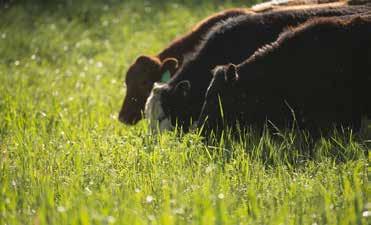
Saskatchewan Ministry of Agriculture www.saskatchewan.ca
• GRASSFED: “True North Foods is partnered with A&W Canada to supply Canadian grassfed beef for A&W’s grassfed burger program.

• SERVICES: Whether you are a specialty producer looking to get your product to a specific market or distributor, or if you are producing commodity livestock for sale, we can partner with you. From our multi-species capabilities to our ability to handle smaller volumes, we offer excellent capabilities for producers in the Canadian Prairies to maximize their profitability.
• FACILITY: We have a state-of-the-art facility to allow us to reach markets across Canada, the USA, and beyond. We understand producer’s needs, their care for their animals, and their honest, straightforward nature. Call us to hear how we can work together to get your product to market. www.truenorthfoods.ca

8 | ©BEEF BUSINESS | www.skstockgrowers.com INDUSTRY NEWS
trever.frattinger@truenorthfoods.ca | 306-536-6193 For all general inquiries call 204-745-3068 offering our best. B
Unwanted Pesticides and Old Medications Events across SK
Cleanfarms is gearing up to run the 2023 fall collection program for unwanted agricultural pesticides and obsolete livestock and/or equine medications to help farmers dispose of these materials safely. The crop protection industry, in partnership with the Canadian Animal Health Institute, covers the full cost of the program.
Save the date: Cleanfarms is running single-day events from 9 a.m. to 4 p.m. between October 23-27, 2023. If you have any of these accepted materials, please bring them to a collection event near you.
Alphabetical BY LOCATION
Genesis Coop AVONLEA SK
Friday, October 27
Synergy AG BALCARRES SK
Wednesday, October 25
Nutrien Ag Solutions BALGONIE SK
Tuesday, October 24
Hawks Agro CENTRAL BUTTE SK
Tuesday, October 24
Richardson Pioneer CORONACH SK
Tuesday, October 24
Richardson Pioneer DAVIDSON SK
Monday, October 23
Richardson Pioneer ESTEVAN SK
Wednesday, October 25
Emerge Ag Solutions ESTON SK
Monday, October 23
Top Notch Farm Supply Inc. FILMORE SK
Friday, October 27
Richardson Pioneer GRENFELL SK
Thursday, October 26
South West Terminal GULL LAKE SK
Thursday, October 26
Simplot (former G-Mac’s Ag Team) LEADER , SK,
Tuesday, October 24
Limerick Co-op LIMERICK SK
Monday, October 23
Richardson Pioneer MAPLE CREEK SK
Wednesday, October 25
P & H MOOSE JAW SK
Thursday, October 26
P&H MOOSOMIN SK
Friday, October 27
Cargill RAYMORE SK
Monday, October 23
Southwest Terminal Ltd. SHAUNAVON SK
Friday, October 27
Pioneer Coop Agronomy SWIFT CURRENT SK
Wednesday, October 25
Pioneer Coop Agronomy SWIFT CURRENT SK

Wednesday, October 25
Parrish & Heimbecker WEYBURN SK
Thursday, October 26
9 www.skstockgrowers.com | ©BEEF BUSINESS | SEPTEMBER 2023 INDUSTRY NEWS
For more information, call
Bradley, Program Coordinator 416-622-1105, email bradleyh@cleanfarms.ca or visit cleanfarms.ca.
B READER SURVEY Enter to win a Cowtown gift card by taking our reader survey! It's quick and easy. Scan the code with your phone-cam OR visit www.surveymonkey.com/r/2Y8DQPN
Heather
Cleanfarms'
Recommended Read: Tales from The Minor Ranch
Barry Minor grew up on a 60,000 acre ranch in the Great Sand Hills of Southwest Saskatchewan.
As a young man he worked hard, but also had freedom to ride his horse over the endless, rolling Sandhills.
He enjoyed the beautiful scenery as well as the spectacular encounters with an abundance of wildlife.
These experiences set the stage for a lifetime of ranching, both in Saskatchewan and British Columbia.
Alongside his full-time ranching career, his keen interest in wildlife let him to another career doing wildlife capture work, that took him across Canada, United States of America, Mexico and Greenland.
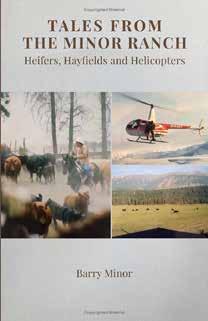
Two falls out of a low flying helicopter, being gored by angry mountain goats and kicked by large elk did not deter Barry— and he continued in his career for more than 20 years.
Barry’s stories, full of colourful characters, will make you laugh and cry, sometimes at the same time.
The adventures he shares in this book are interesting, to say the least.
Check it out in paperback at your local bookstore or order it from Amazon.com B
Saskatchewan Stock Growers Association (SSGA) greatly appreciates the wonderful array of high-resolution images that have been submitted by local photographers since our photo contest began in 2022!
We use these images in Beef Business Magazine and SSGA's industry advocacy work. So, if you are one of these photographers, we hope you take pride in knowing that you are supporting the Canadian livestock industry with your unique talent for immortalizing ranching life in the 21st century.

Thank you! We warmly welcome your artistry!

10 | ©BEEF BUSINESS | www.skstockgrowers.com SEPTEMBER 2023 INDUSTRY NEWS
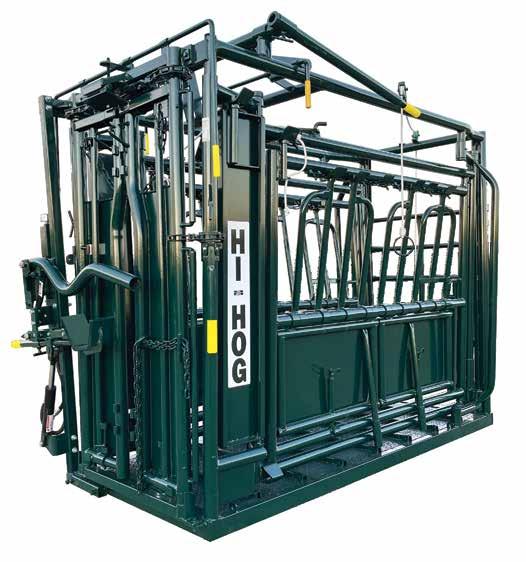
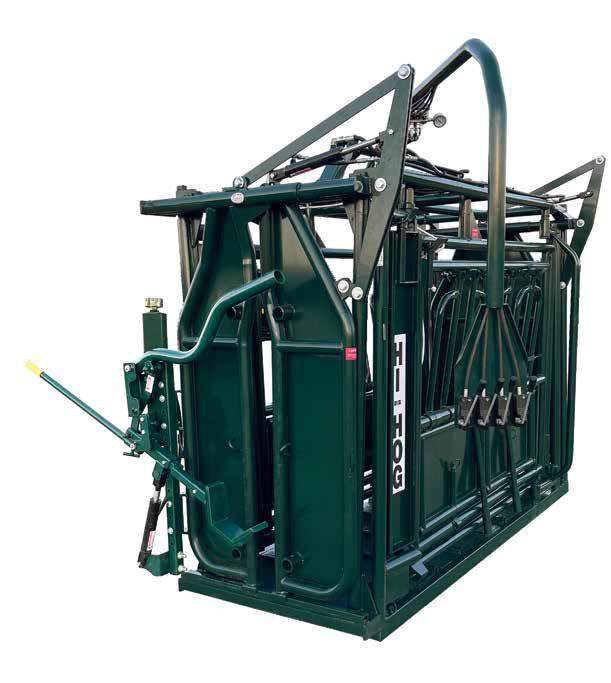
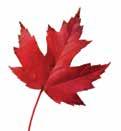

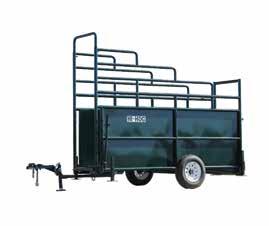

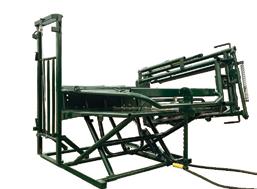

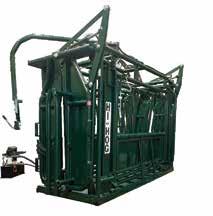
SQUEEZE CHUTES CALVING ENCLOSURES TIPPING TABLES ALLEYS & TUBS CALF ALLEYS LOADING CHUTES Custom Systems Using Stock Components www.hi-hog.com 1-800-661-7002 e-mail us at salesinfo@hi-hog.com
SSGA Launches Member Benefits Marketplace
Kori Maki-Adair
Did you know that earlier this year, Saskatchewan Stock Growers Association (SSGA) launched BenefitHub, which is a digital member benefits marketplace available exclusively to SSGA members?
BenefitHub is an online portal that provides valuable discounts and rewards in a variety of sectors, including: medical, dental, rental cars, hotels, travel, technology, electronics, software, office supplies and much more.
“We are always looking for new ways to add value to SSGA membership. Our new partnership with HUB International is allowing us to expand our offering beyond our existing partnerships with D3H Hotels, Datamars, Fencefast, OLS and Young’s Equipment,” said SSGA President Garner Deobald.
SSGA’s Member Benefits program is a suite of voluntary benefits for SSGA members to access whenever they choose through the HUB-hosted online digital portal.
Through this program, SSGA members can explore insurance products that may fill a gap in their current coverage or solve a problem they may not yet know exists.
SSGA General Manager Chad MacPherson describes it as a value-added feature for SSGA membership and encourages SSGA
ASSOCIATE
members to visit ssga.benefithub.com learn more.
To take advantage of these discounts and rewards, you need to be an SSGA member. So, if you are interested in becoming an industry advocate as an SSGA member, but have not yet joined the organization formally, here's one more reason to do so.
SSGA invites all interested parties to contact the office at 306-757-8523 to learn more.
B
Individuals or groups that are not actively engaged in livestock production or marketing, but have an interest in the industry Ineligible
ACTIVE Individuals engaged in livestock production in Saskatchewan Eligible AFFILIATE Groups engaged in livestock marketing (e.g., breed associations) One vote per group
Need some help?
Programs and services that provide expertise to ag producers:
Agriculture Knowledge Centre
Tech/general ag questions, program inquiries and pathfinding services
Toll-free: 1-866-457-2377
Email: aginfo@gov.sk.ca
Web: saskatchewan.ca/agriculture
Do More Ag
A not-for-profit organization focusing on mental health in agriculture
Web: www.domore.ag
Farm Credit Canada
Financing, insurance and business management knowledge
Toll-free: 1-888-332-3301
Web: www.fcc-fac.ca
Farm Stress Line Saskatchewan Support when you need it the most Available 24 hours, seven days a week
Toll-free: 1-800-667-4442
Email: help@farmstressline.ca
Web: farmstressline.ca
MNP
Chartered accountants and business consulting with 14 locations in SK
Regina: 306-790-7900
Web: www.mnp.ca/en/agriculture
Saskatchewan Crop Insurance Corporation
Drought support for Saskatchewan livestock producers
Toll-free: 1-844-723-1211
12 | ©BEEF BUSINESS | www.skstockgrowers.com SEPTEMBER 2023 INDUSTRY NEWS
TYPE DESCRIPTION VOTING PRIVILEGES
SSGA Launches Member Benefits Marketplace

LIVESTOCK MARKETERS OF SASKATCHEWAN 306-933-4404 | office@agribiz.ca | livestockmarketers.ca

Alphabetical BY LOCATION
TEAM Auction Sales
Contact: Jason Danard
200. 5925 - 12 Street SE
CALGARY AB T2H 2M3
Ph: 403-234-74292
administration@calgarystockyards.com www.teamauctionsales.com
Kelvington Livestock
Contact: Clint Peterson Box 640
KELVINGTON SK S0A 1W0
Ph: 306-327-4642
kelvstockyards@sasktel.net www.kelvingtonstockyards.com
Eaton Livestock
Contact: Shannon Eaton Box 10336
LLOYDMINSTER AB T9V 3A5
Ph: 780-875-8322 | 780-872-9375 eatonlivestock@outlook.com
Mankota Stockmen’s Weigh Co. Ltd.
Auction Market
Contact: Chris Williamson Box 248
MANKOTA SK S0H 2W0
Ph: 306-478-2229
mankotastockmens@sasktel.net www.mankotastockmens.com
Northern Livestock Sales
Auction Market
Contact: Brent Brooks Box 930
LLOYDMINSTER SK S9V 1C4
Ph: 306-240-5340
brent.mlstockyards@sasktel.net www.northernlivestocksales.ca
Cowtown Livestock Exchange
Auction Market
Contact: Tyler Cronkhite Box 730
MAPLE CREEK SK S0N 1N0
Ph: 306-662-2648
cowtown.ls@sasktel.net cowtownlivestockexchange. homesteadcloud.com
Meadow Lake Stockyards Ltd. Auction Market
Contact: Brent Brooks Box 130
MEADOW LAKE SK S9X 1Y1
Ph: 306-240-5340 brent.mlstockyards@sasktel.net
Heartland Livestock Services
Contact: Grant Barnett Box 608 (780 Home Street West)
MOOSE JAW SK S6H 7P4
Ph: 306-692-2385 plister@hls.ca | tboehm@hls.ca www.hls.ca
JGL Livestock
Order Buyer/Assembly Station
Contact: Todd Hudson
RR 280 Hwy #1 West, Box 40
MOOSE JAW SK S6H 4N7
Ph: 306-692-4911
toddhudson@jglcattle.com www.jgllivestock.com
Johnstone Auction Mart Ltd.
Auction Market
Contact: Scott & Wayne Johnstone Box 818
MOOSE JAW SK S6H 4P5
Ph: 306-693-4715
info@johnstoneauction.ca www.johnstoneauction.ca
Titan Livestock
Contact: Chad Eaton Box 1384
MOOSE JAW SK S6H 4R3
Ph: 306-692-9668
officemj@titanlivestock.com www.titanlivestock.com
Prairie Livestock
Order Buyer/Assembly Station
Contact: Dion Huel Box 964
MOOSOMIN SK S0G 3N0
Ph: 306-435-3327
office@prairielivestock.ca
www.prairielivestock.ca
Northern Livestock Sales Auction Market
Contact: Brent Brooks
Box 186, South Elevator Road
PRINCE ALBERT SK S6V 5R5
Ph: 306-240-5340
brent.mlstockyards@sasktel.net
www.northernlivestocksales.ca
Miller Livestock Order/Buy Co. Ltd. Order Buyer
Contact: Deryl Miller
Box 60
SASKATOON (GRANDORA 24km W of)
SK S0K 1V0
Ph: 306-382-3277
millerlivestock@sasktel.net
www.millerlivestock.ca
Saskatoon Livestock Sales
Auction Market
Contact: Pat Tellier
Box 60
SASKATOON SK S7K 3K1
Ph: 306-382-8088
admin@saskatoonlivestocksales.com
www.saskatoonlivestocksales.com
Heartland Livestock Services
Contact: Lee Crowley
Box 367, Hwy1 West
SWIFT CURRENT SK S9H 3V8
Ph: 306-773-3174
info@hls.ca
www.hls.ca
Holdstock Livestock
Order Buyer/Assembly Station
Contact: Roger Holdstock
Box 564
WEYBURN SK S4H 2K7
Ph: 306-842-3144
jholdstock@sasktel.net
Weyburn Livestock Exchange
Auction Market
Contact: Roy Rutledge
Box 1504
WEYBURN SK S4H 3N8
Ph: 306-842-4574
wle@weyburnlivestock.com
www.weyburnlivestock.com
14 | ©BEEF BUSINESS | www.skstockgrowers.com SEPTEMBER 2023
Adele Buettner | Bay 6A 3602 Taylor St E | Saskatoon SK S7H 5H9
Heartland Livestock Services
Contact: Virginia Vargo
Box 490 (107 York Rd E)
YORKTON SK S3N 2W4

Ph: 306-783-9437
info@hls.ca
www.hls.ca
ASSOCIATE MEMBERS
TJF Farm & Transport Inc.
Contact: Tylor Fisher Box 172
CUDWORTH SK S0K 1B0
Ph: 306-371-7275
tjffarm.transport@sasktel.net teamauctionsales.com
Lazar Equipment
Contact: Geraldine Wagman
520 - 9 Street West
MEADOW LAKE SK S9X 1Y4
Ph: 306-236-5222
sales@lazarequipment.com
www.lazarequipment.com
Canadian Cattle Buyers Credit
Contact: Tim Adams | Rick Oakes Box 40
MOOSE JAW SK S6H 4N7
Ph: 306-692-4911
timadams@ccbccattle.com rickoakes@ccbccattle.com www.ccbccattle.com
JGL Grain
Contact: Glen Loynes Box 40
MOOSE JAW SK S6H 4N7
Ph: 306-642-2387
glen@jglgrain.com www.jglcommodities.com
Roberge Transport
1750 Stadacona Street West
MOOSE JAW SK S6H 4P4
Ph: 306-693-4838
roberge4@sasktel.net
Farm Credit Canada

1800 Hamilton Street
REGINA SK S4P 4L3
Ph: 888-522-2555
www.fcc.ca
Corman Park Vet Services
Contact: Dorrie Laberswieler
Box 60
SASKATOON SK S7K 3K1
Ph: 306-343-5773
dorrie.cpvs@gmail.com
www.cormanparkvet.ca
15 www.skstockgrowers.com | ©BEEF BUSINESS | SEPTEMBER 2023
S A S K A T C H E W A N C O N S E R V A T I O N O F F I C E R S N E E D Y O U R H E L P T O S O L V E T H I S C A S E . Y O U C A N R E M A I N A N O N Y M O U S A N D E A R N U P T O $ 2 0 0 0 C A S H R E W A R D S I F T H E I N F O R M A T I O N Y O U P R O V I D E L E A D S T O A C O N V I C T I O N .
For the latest unsolved cases, visit www.sasktip.com and follow @sasktip
MARKETS AND TRADE
RETAIL MEAT PRICE SURVEY
as of September 2, 2023 ($/lb)
*These items were unavailable at the time of data collection
JOIN THE SHELTER
YOUNG PRODUCER PROGRAM
AVAILABLE TO 4-H PARTICIPANTS

FEEDER CATTLE
12 MONTHS | 5% DEPOSIT
BREEDER CATTLE
16 | ©BEEF BUSINESS | www.skstockgrowers.com SEPTEMBER 2023
SUPERSTORE SOBEYS CO-OP SAVE-ONFOODS Ground beef - lean $ 3.99 $ 6.00 $ 3.96 $ 5.45 Cross rib roast * $ 10.91 $ 8.43 * Rib roast * $ 19.94 * $ 22.52 Outside round roast $ 10.99 * $ 6.95 $ 8.92 Inside round roast $ 10.99 $ 11.90 $ 8.43 * Ribeye steak $ 23.50 $ 15.92 $ 16.37 $ 19.86 Round steak $ 10.99 $ 11.90 * $ 8.42 Sirloin steak $ 11.99 $ 5.52 $ 9.92 $ 10.90 T-bone steak $ 22.99 $ 24.56 $ 16.37 $ 22.83 Tenderloin $ 31.60 $ 39.71 * $ 39.73
Providing innovative, a ordable and competitive nancing options for Saskatchewan livestock producers. SKLF is pleased to o er the following programs:
Visit us at SKLIVESTOCKFINANCE.CA or call (306) 775-COWS (2697) Ratesas lowas
5 YEARS | 10% DEPOSIT FEEDER BISON 18 MONTHS | 5% DEPOSIT BREEDER BISON 6 YEARS | 10% DEPOSIT
Prime0.5% +


Tulathromycin injection 100 mg/mL BECAUSE YOU CALL THE SHOTS www.vetoquinol.ca FOR ALL THE RIGHT REASONS. Vetoquinol is a family-owned animal health company Just like you, we are passionate about what we do. Our products are backed by years of experience dedicated to quality. Lydaxx® gets the job done. You call the shots because your feedlot is your family legacy. Switch to Vetoquinol. For all the right reasons CONSULT YOUR VETERINARIAN
MARKETS AND TRADE
For more information visit www.canfax.ca

SK Weekly Average Price Steers
Lethbridge Barley Price

18 | ©BEEF BUSINESS | www.skstockgrowers.com SEPTEMBER 2023 135.00 145.00 155.00 165.00 175.00 185.00 195.00 205.00 215.00 225.00 235.00 245.00 255.00 Wk 1 Wk 4 Wk 7 Wk 10 Wk 13 Wk 16 Wk 19 Wk 22 Wk 25 Wk 28 Wk 31 Wk 34 Wk 37 Wk 40 Wk 43 Wk 46 Wk 49 Wk 52 Price per hundred weight
Fed
2023 2022 2021 0.72 0.73 0.74 0.75 0.76 0.77 0.78 0.79 0.80 0.81 Wk 1 Wk 4 Wk 7 Wk 10 Wk 13 Wk 16 Wk 19 Wk 22 Wk 25 Wk 28 Wk 31 Wk 34 Wk 37 Wk 40 Wk 43 Wk 46 Wk 49 Wk 52 CDN $US terms Weekly Canadian Dollar 2023 2022 5 yr avg 20182022 60.00 70.00 80.00 90.00 100.00 110.00 120.00 130.00 140.00 150.00 160.00 Wk 1 Wk 4 Wk 7 Wk 10 Wk 13 Wk 16 Wk 19 Wk 22 Wk 25 Wk 28 Wk 31 Wk 34 Wk 37 Wk 40 Wk 43 Wk 46 Wk 49 Wk 52 Price per hundred weight
Weekly D1 & D2 Cows 2023 2022 2021 Source: CanFax 165.00 185.00 205.00 225.00 245.00 265.00 285.00 305.00 325.00 345.00 365.00 385.00 Wk 1 Wk 4 Wk 7 Wk 10 Wk 13 Wk 16 Wk 19 Wk 22 Wk 25 Wk 28 Wk 31 Wk 34 Wk 37 Wk 40 Wk 43 Wk 46 Wk 49 Wk 52 Price per hundred weight
AB
Steer Prices
Alberta
500-600 lbs 2023 2022 2021 165.00 185.00 205.00 225.00 245.00 265.00 285.00 305.00 325.00 345.00 365.00 385.00 Wk 1 Wk 4 Wk 7 Wk 10 Wk 13 Wk 16 Wk 19 Wk 22 Wk 25 Wk 28 Wk 31 Wk 34 Wk 37 Wk 40 Wk 43 Wk 46 Wk 49 Wk 52 Price per hundred weight
500-600 lbs 2023 2022 2021 190.00 240.00 290.00 340.00 390.00 440.00 490.00 Wk 1 Wk 4 Wk 7 Wk 10 Wk 13 Wk 16 Wk 19 Wk 22 Wk 25 Wk 28 Wk 31 Wk 34 Wk 37 Wk 40 Wk 43 Wk 46 Wk 49 Wk 52 Price per tonne
SK Weekly Average Price Heifers
2023 2022 2021 2020
Source: CanFax Source: CanFax Source: CanFax Source: CanFax Source: CanFax
Weekly Canadian Dollar
Source: Bank of Canada
Alphabetical BY LOCATION
Shur-Livestock Exporting & Trucking
Lot Capacity 800
Contact: Norm Shurygalo
Box 308
BIENFAIT SK S0C 0M0
Ph: 306-388-2329 Cell: 306-421-3482 shur01@sasktel.net
P Cross Ranch
Contact: Garrett Poletz
Box 1834
BIGGAR SK S0L 2M0
Ph: 306-948-8057 pcrossranch@outlook.com
Flotre Feeders
Lot Capacity 1,000
Contact: George Flotre
Box 21
BULYEA SK S0G 0L0
Ph: 306-725-4510 Cell: 306-725-8292 gjflotre@gmail.com
Bar JB Ranch Ltd.
Lot Capacity 6,000
Contact: Eric Buyer
Box 40
CARNDUFF SK S0C 0S0
Ph: 306-717-8905 www.barjbranchltd.com
Ceylon Gap Feeders Inc.
Lot Capacity 20,000
Contact: Luis Medina Cortez
Box 128
CEYLON SK S0C 0T0
Ph: 306-454-2250
luis@ceylongapfeeders.com
Facebook: Ceylon Gap Feeders
Living Sky Beef
Lot Capacity 1,500
Contact: Ryan Thompson
Box 263
CEYLON SK S0C 0T0
Ph: 306-815-7401
Duckworth Ranches Inc.
Lot Capacity 2,500
Contact: Gerry Duckworth
Box 37
COURVAL SK S0H 1A0
Ph: 306-630-8760
Burntout Creek Ranch
Lot Capacity 4,000
Contact: Jordan Kowal
Box 36
CROOKED RIVER SK S0E 0R0
Ph: 306-873-0129
jordanfkowal@gmail.com
L-7 Feeders
Lot Capacity 2,500
Contact: Chad & Crystal Ross Box 1087
ESTEVAN SK S4A 2H7
Ph: 306-421-6346
chadross@xplornet.ca
Red Coat Cattle Feeders Inc.
Lot Capacity 18,500
Contact: Kevin Antworth Box 86
HAZENMORE SK S0N 1C0
Ph: 306-264-3844 info@rccf.ca
Tee Two Land & Cattle Co.
Lot Capacity 2,500
Contact: Duane Thompson Box 285
KELLIHER SK S0A 1V0
Ph: 306-795-7277
teetwo@xplornet.com
Pound-Maker Agventures Ltd.
Lot Capacity 28,500
Contact: Brad Welter Box 519
LANIGAN SK S0N 1C0
Ph: 306-365-4281
pma@pound-maker.ca www.pound-maker.ca
Sunny Slope Cattle Ltd.
Lot Capacity 2,500
Contact: Don Bowyer Box 1744
MAPLE CREEK SK S0N 1N0
Ph: 306-662-2901 Cell: 306-741-4375
don@sunnyslopecattle.com sunnyslopecattle.com
Hi-Lite Custom Feedlot
Lot Capacity 5,000
Contact: Dan and Jeff Stevenson
6-4, R.R. 1
MELFORT SK S0E 1A0
Ph: 306-752-3665
danny.hi.lite@yourlink.ca
Dietrich Farms Ltd.
Lot Capacity 2,200
Contact: Jim Dietrich Box 68
MENDHAM SK S0N 1P0
Ph: 306-628-4249 Cell: 306-628-7170
jdietrich@sasktel.net
Smith Ranch
Lot Capacity 1,500
Contact: Terry Smith Box 64
MENDHAM SK S0N 1P0
Ph: 306-628-7742
terrysmith7742@gmail.com
20/20 Ranching
Contact: Ryan Vandenhurk PO Box 300
MIDALE SK
Ph: 306-421-0825
2020ranching@gmail.com
Buffalo Plains Cattle Co.
Lot Capacity 25,000
Contact: Phil Lynn Box 674
MOOSE JAW SK S6H 4P4
Ph: 306-624-2381
M & T Feedlot
Lot Capacity 3,500
Contact: Greg Thompson Box 336
MOOSE JAW SK S6H 4N9
Ph: (306) 694-5314 Cell: 306-631-7413
Top Gun Feeders
Lot Capacity 10,000
Contact: Derek Lawton
MOOSE JAW SK
Ph: 780-712-0763
derek@titanlivestock.com
Excellerator Genetics
Lot Capacity 4,000
Contact: Ron Dietrich
Box 116
MOOSOMIN SK S0G 3N0
Ph: 306-435-9381
excellerator@sasktel.net
www.excelleratorgenetics.com
Westwood Land & Cattle Co.
Lot Capacity 10,000
Contact: Kevin Woods
Box 6
MOOSOMIN SK S0G 3N0
Ph: 306-435-2102
Cell: 306-435-7313 or 306-435-3711
Bluestone Stock Farms
Lot Capacity 500
Contact: Jason & Karla Hicks
Box 265
MORTLACH SK S0H 3E0
Ph: 306-355-2265 Cell: 306-630-7466
bluestone@sasktel.net
www.bluestonestockfarms.com
19 www.skstockgrowers.com | ©BEEF BUSINESS | SEPTEMBER 2023
SASKATCHEWAN FEEDLOT DIRECTORY
Beef Market Outlook 2023 Fall Run
Kori Maki-Adair
The lasting drought in many parts of the country continues to affect feed costs and availability, and impact the profitability of beef producers and feedlots across North America—especially in Western Canada.
Whether Saskatchewan soil receives the much-needed rain ahead of harvest, or not, cattle supplies are tight and are expected to be so in the coming years.
This continued situation is resulting in record-high prices at the consumer level; and though consumer demand is considered stable, Statistics Canada indicates that most wealth is held by relatively few households.
While the youngest and least wealthy households (aged less than 45 years) account for 40 per cent of Canada’s population, those households control less than three per cent of the country’s wealth.
It’s an increasing population of households that represent more than 47 per cent of all growth since the third quarter of 2021. According to Statistics Canada, those households have recordhigh debt-to-income ratios—which means less disposable income, less savings and less purchasing power at the meat counter.
Producers and feedlots are also facing unprecedented times, again, so Beef Business reached out to Canfax Executive Director Brenna Grant to share her expert analysis of the current situation and her projections for 2023’s fall run.
Beef Business: Thank you for sharing your subject matter expertise with us, Brenna. Your insight will support thousands of livestock producers to assess their business risk and make strategic decisions that optimize their profitability at a very tough time in history.
Before we discuss your outlook for 2023’s fall run, please set the scene for our readers by providing some context for your forecast.
Brenna Grant: There is reason for optimism with record high cattle prices and continued consumer demand, despite the higher beef prices. But this optimism is currently being tempered by drought. Three market issues will determine where the beef industry moves in the longer term—demand, drought and speed of rebuilding.
Specifically, drought and feed costs will determine the speed of rebuilding the herd, affecting how soon the prices come back down. While beef cow inventories have declined by eight to 10 per cent in most provinces since 2020 (pre-2021 drought), soil moisture remains depleted across much of the Prairies and will result in a slow recovery of pasture and forage.
Beef Business: What have you observed in the beef market since fall run 2022?
Brenna Grant: Cattle prices have marched higher throughout the first half of the year, making new record highs. Consumer demand has been resilient despite higher beef prices. However, dryness returned to many parts of the prairies and the reality of a multi-year drought has limited margins.
Beef Business: What is your market outlook for fall run 2023, and beyond?
Brenna Grant: While more seasonality will be seen in 2023, cattle prices are expected to remain strong this fall.
Forward delivery prices for the fall typically indicate what the top of the market could be and it looks to be steady to counter-seasonally stronger as a smaller calf crop is coming forward.
Beef Business: What are the factors affecting calf prices? How high do you think calf prices could go?
Brenna Grant: Feed grain prices are expected to soften this fall with improved production and reduced livestock demand as Canadian hog and cattle inventories are down.
Canfax is Canada’s source of cattle market information. Canfax Research Services (CRS) provides the Canadian beef industry with comprehensive statistical and market information on the domestic and global beef trends.
Economic analyses are utilized for marketing, research, policy and investment decisions supporting strategies, business plans and performance measurement.
Brenna grew up in Southwest Saskatchewan on a cow-calf, yearling grasser operation that her family still operates. She received a Bachelor of Arts in Agricultural Economics from University of Saskatchewan and a Masters in Applied Economics from Montana State University.
She is currently the Chair of the Statistics Canada Agriculture and Food Advisory Committee and Chairs the Global Roundtable for Sustainable Beef’s Climate Science Committee.
CRS provides project and data management for the Canadian Roundtable for Sustainable Beef (CRSB) National Beef Sustainability Assessment.

20 | ©BEEF BUSINESS | www.skstockgrowers.com SEPTEMBER 2023 FEATURE
Brenna Grant Executive Director Canfax and Canfax Research Services
However, they will remain above historical levels with tight carry-in stocks, uncertainty around weather conditions and changes in international trade flows. How high calf prices go will be largely determined by how low feed grain prices go this fall.
Beef Business: When do you expect prices to peak on this round?
Brenna Grant: North American cattle supplies are the tightest since 2014. However, unlike the last cattle cycle when rain resulted in United States (US) producers retaining heifer calves in 2013 with their calves hitting the market in 2015.
This time around, dry conditions are preventing herd expansion in North America. Even if cow-calf producers retain heifer calves this fall, it will be fall 2025 before a larger calf crop would be possible and 2026 before larger beef production materialized.
Cattle prices are expected to be steady to stronger for the next two to three years. Margins will improve as feed prices come down, but that is largely dependent on weather and rebuilding soil moisture conditions.
In addition, there was less substitution between meats at higher prices than at lower prices. This explains the resilient consumer demand despite higher beef prices. However, we must be cautious as this showcases a shift toward a higher-income consumer and away from the more price-sensitive, lowerincome consumers.
It should be remembered that per capita consumption is not demand. Demand is willingness to pay and combines consumption with price. As North American supplies tighten this year and
GAP BETWEEN RICH AND POOR WIDENS AT FASTEST PACE ON RECORD
making beef uncompetitive. At this point, the potential of that happening is another year off, as carry-in stocks remain tight and grain prices remain elevated from historical levels.
Beef Business: What is your point of view on beef exports?
Brenna Grant: Beef exports are down in 2023 with smaller domestic beef production. However, the drop in domestic production has been larger than the drop in export volumes as the international consumer is bidding product away.
Most wealth is held by relatively few households in Canada.
The wealthiest (top 20 per cent) accounted for more than twothirds (67.8 per cent) of net worth in the first quarter, while the least wealthy (bottom 40 per cent) accounted for 2.7 per cent.
The least wealthy households tend to be younger than average.
While households aged less than 45 years accounted for 36.2 per cent of all households, they represented 55.2 per cent of those in the lowest two wealth quintiles.
Younger households have also recently increased their share of the total population, as they accounted for 47.3 per cent of all growth since the third quarter of 2021.
Beef Business: What do you think is driving prices for all classes of live cattle this season?
Brenna Grant: Tight North American cattle supplies and continued strong demand for beef.
Beef Business: What are your thoughts on this demand plateau?
Brenna Grant: The combination of high consumer demand with the current tight beef supplies added up to record high beef prices. United States research using 2014 peak retail prices, indicated that beef price changes at the high end of the price distribution have a smaller impact on quantity than price changes at lower price levels.
moving forward, per capita consumption will drop. However, what happens with demand will be determined by price and what the consumer is willing to pay.
Beef Business: How will beef stack up against chicken and pork?
Brenna Grant: As long as historical price relationships hold between the main proteins (beef, pork and poultry), there tends to be more switching down within the beef categories from higher priced cuts to lower priced cuts. During recessions, versatile products like ground beef tend to perform well.
The possibility is that if feed grain prices were to drop quickly, that pork and poultry can take advantage of that much quicker and increase production, pressuring their retail prices lower and
Both domestic and international consumers are adjusting to inflation. But right now, consumers of highquality, grain-fed beef continue to buy product.
Beef Business: Record high beef prices accompanied by drought and a tighter cattle supply this year, can make budgeting and business planning a challenge for members of the beef value chain, retailers and consumers.
Your expert analysis on the current and future of the beef market, including the complex array of factors affecting it, support a business mindset of cautious optimism at a time when most Canadian beef producers are challenged with making some incredibly-impactful business decisions heading into fall run and winter 2023.
Thank you, Brenna.
REFERENCES:
Statistics Canada
Distributions of household economic accounts for income, consumption, saving and wealth of Canadian households, first quarter 2023
https://www150.statcan.gc.ca/n1/dailyquotidien/230704/dq230704a-eng.htm
Canada Beef
Domestic Market Report Q2 2023
https://cdnbeefperforms.ca/wp-content/ uploads/2023/06/DMIR-Canada-Q2-2023. pdf
21 www.skstockgrowers.com | ©BEEF BUSINESS | SEPTEMBER 2023 FEATURE
B
- Statistics Canada
Clear View Angus: Conserving Habitat to Sustain A Way of Life
At no time during our interview did Brian Highsaw ever say, “Shucks, it was nothing.”
For one thing, he knows otherwise. The efforts that he and his wife Debbie put into preserving and protecting the native grasslands on their Mankota-area operation are critically important, and they require thought, planning and work.

But, as winners of The Environmental Stewardship Award (TESA) for Saskatchewan, Brian says he and his family never thought they were doing anything remarkable—they are just doing what they have been doing for generations.
He said winning the award was “very surprising and a little bit overwhelming. But we’re pretty honoured at the same time. I grew up being a believer in preserving native grasses, and so we just carried on with it.”
Their operation, Clear View Angus Ltd., includes more than 6,000 acres of native prairie grassland, and another 2,100-plus acres of tame grass. Brian says the tame grass is the key to their approach toward protecting the native grass.

“As time went on, we thought maybe we should seed more farm ground to tame grass, and then we can keep animals off [the native grass] even longer and preserve a little more,” he said.
Brian and Debbie have worked closely with Grasslands National Park staff. Their ranch borders the park, and at one time, the Highsaws leased 21 sections of land from Parks Canada. Their cattle grazed the federal properties in a way that helps reach management and biodiversity goals on the native grasslands, both within the park and on their own land.
The tame grass and the use of the park’s native grass has allowed them to rest the native prairie longer between grazing cycles.
Jeff Gaye
They feed mainly on tame grass, Brian explains, which puts fertilizer back into the soil at the same time. “Normally, we sell our steers in October.
We keep all of the heifers and background them until spring,” he said. “Then, we’ll sort off our replacement heifers. Then, we’ll sort off the very bottom end, and we’ll grass them for a little bit, and we sell what is left.
“So basically, we keep the replacements in the spring, and the rest of them go to town, except for a handful of bottom end that go right to grass—until the end of August or into September. In the spring, we start calving around mid-April, and we keep them on tame grass as long as we possibly can. Then, we move them to different parcels of tame.”
The Highsaws move the cows and calves to a parcel of native grass in the summer, and then to a different parcel of native grass.
“We’re kind of rotating, so to speak, but not in a holistic way. We’re always moving them to different parcels,” Brian said.
“It all depends on the weather too, right? If it keeps raining, we’ll keep them on the tame grass as long as we can. There are some parts of native that we haven’t used for a year and a half, small parcels—but, it all depends on the year.”
Sustainable ranching is not just about conserving the natural environment; it’s also important to sustain the profitability of the operation. However, these are two sides of the same coin, Brian says.
Rotating pastures and moving the animals is important; the other side of it is making sure the size of the herd does not exceed the capacity of the land to sustain it.
“We never increase the numbers at all,” Brian said. “We just saw an opportunity,
that if it turns really dry, we’ll be happy we’re saving our grass. So, we never, ever increase the numbers because if a bad drought comes along, we still have grass.”
The Highsaws were nominated for the TESA by Saskatchewan Stock Growers Foundation (SSGF) and South of Divide Conservation Action Plan (SODCAP). Indeed, they partnered with those organizations to develop strategies and plans to make the sensitive land productive while preserving the fragile native ecosystems.
Brian has been a conservation leader and an ambassador amongst ranchers in the southwest. He has consistently reached out to producers to gather their opinions and insights. At the same time, he has provided key information to improve understanding of how better management practices can enhance productivity; while, conserving the native grass.
“When the tough task of engaging landowners on opinions of Conservation Easements was undertaken by SSGF and SODCAP, Brian once again stepped up,” the nomination reads. “Brian offered to be a host for multiple landowners to come and give opinions on the subject and hosted an evening meeting at his residence.”
22 | ©BEEF BUSINESS | www.skstockgrowers.com SEPTEMBER 2023 FEATURE
Debbie and Brian Highwaw Mankota, Saskatchewan
These efforts allowed the groups and the landowners to have frank discussions, offering the conservation organizations a chance to get feedback from producers.
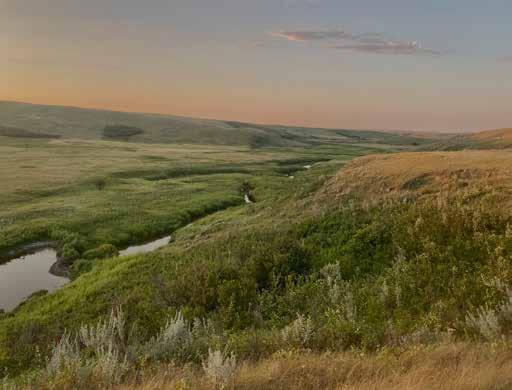
“There’s nothing to be scared of with stewardship programs,” Brian said. “We’ve been working with stewardship programs since 2001, and they’ve been very good to us. They’re very easy to work with and [they’re] understanding. They’re promoting what we’re already doing.”
The Highsaws’ adaptive management approach has helped them maintain high-quality biodiversity on their land. In turn, this biodiversity positively affects neighbouring land as well. They have explored different management techniques such as changes to grazing patterns, stocking density, timing and rest, allowing their range health to improve even while others were declining.
“This is all done within and amongst the complexities of the overarching ranching operation, no small task for land managers,” reads the SSGF-SODCAP nomination letter.
The land, on which Northern Wheatgrass and Western Porcupine are the dominant grass species, is home to animal species at risk including Sprague's Pipit and Thickbilled Longspur. It has been identified as critical habitat for Swift Fox and Greater Sage Grouse, with federally-designated critical habitats for the latter.
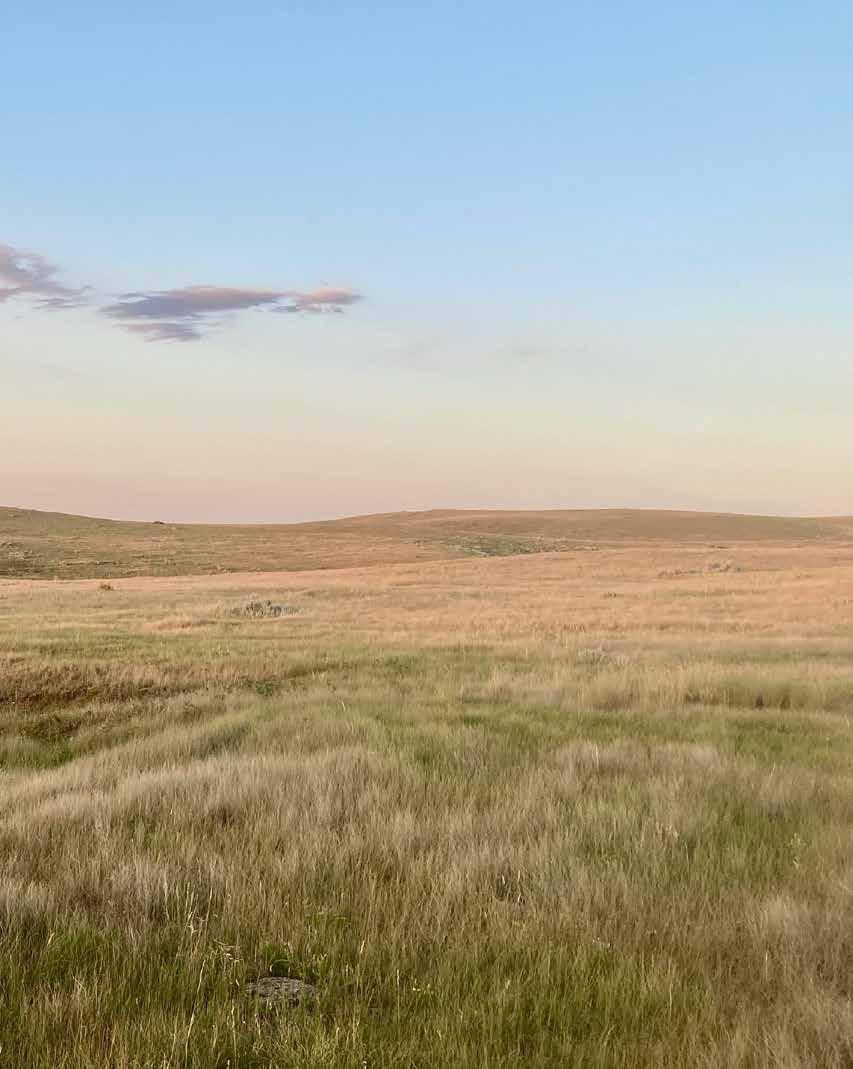
Clear View Angus Ltd. entered into a four-year Results-Based Conservation Agreement with Saskatchewan Stock Growers Association in 2017, covering approximately 3,520 acres of native prairie. The voluntary agreement with the Highsaws was established to meet habitat targets as described by Canada’s Recovery Strategies for Greater Sage Grouse and Sprague’s Pipit.
Range biologists completed habitat assessments in each of the four years covered by the agreement. Every year, the operation met its targets for both Sprague’s Pipit and Greater Sage Grouse. Meanwhile, range condition scores averaged 90 (i.e., excellent).
Brian says it boils down to the old adage ‘You look after the land, and the land will look after you.’
Healthy grass gives the Highsaws a buffer in those years when the rain does not come.
“I mean, your numbers fluctuate too, right? If we get too many years of drought, we’re lucky that we’re able to bank some native grass for times like this,” he said. “Conversely, you might get a wet spring, in which case you can stay even longer on the tame grass before moving the cattle onto the native. That gives the native grass a good chance to get going.
“It’s like a blanket. It keeps the ground warm and shaded and holds the snow at same time. Wherever there’s old grass, there’s usually green grass in amongst it. Our current course is to try to make sure that we’ve got a good amount of native left for that reason.”
The Highsaws look after their native prairie for the good of their operation and for the health of the grass; but, there’s something in it for them, too.
“This is our happiness, being out in the native prairie, looking around and
enjoying the clean fresh air, and you can see for miles,” Brian said. “That’s just part of us, right? God’s country, we call it.”
While Brian has occasionally worked off of the ranch, he says he always knew he would be coming back. It is all he ever wanted to do.
So while he and Debbie may have been surprised to win the TESA for just doing what they have always done, they know full well that taking care of the grasslands is serious business.
In the nomination letter, SSGF and SODCAP said: “The challenges they have faced from BSE to drought and everything in-between, are not overcome by the faint of heart. The Highsaws buckle down, do what serves their family, cattle and land to implement changes to safeguard the family ranch. They do all this while serving as the best land stewards they can possibly be, and are never afraid to learn or try something new.”
As Brian puts it, “We’re growing food for the world. Healthy food from healthy animals on healthy grass. We try to keep our animals and our ground as healthy as we can. That’s sustainable beef, I guess.”
23 www.skstockgrowers.com | ©BEEF BUSINESS | SEPTEMBER 2023 FEATURE
B
Mankota, Saskatchewan
Satellite-Based Forage Insurance Pilot Prepares for Launch
Kori Maki-Adair
Since there is no way to predict if and when drought will develop, remain the same or improve, Saskatchewan Stock Growers Association (SSGA) decided to launch a project to help insurers cover cattle producers against shortages in forage yield resulting from climate hazards like drought and excessive heat during grass and crop development.
SSGA General Manager Chad MacPherson says the organization designed the project to provide more accurate and site-specific rainfall data for determining forage crop insurance claims across the Canadian Prairies.
MacPherson said SSGA’s board followed advice from Jeff Yorga, SSGA 1st VicePresident and a rancher from Flintoft, to look into AIRBUS Defence and Space GPI technology, which is enabling insurers in France, Brazil and Italy to cover and protect livestock producers against forage yield shortages by featuring an estimation of grass growth.
Since learning more about AIRBUS Defence and Space Grassland Production Index (GPI) technology, producer organizations, including SSGA, have been calling for governments and their crop insurance programs to adopt satellite-based data to assess rainfall. The information can be localized to a specific farm or ranch, and will allow drought-affected producers to claim for actual losses.
SSGA selected Saskatchewan-based Global Ag Risk Solutions to lead the project team, which has been funded in part, so far, by the Government of Canada under the Canadian Agricultural Partnership’s AgriRisk Initiatives.
With loads of work completed, more work underway, and continued drought across the Prairies and in many parts of Canada, Beef Business reached out to Global Ag Risk Solutions (GARS) to provide a timesensitive project update for readers. GARS
directed us to the project’s team leader: Damon Johnson.
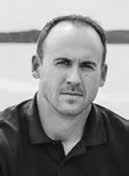
Johnson is the Chief Technology Officer at Global Ag Risk Solutions and co-founder at Parametrics.Ag, where his role is focused on innovative index-insurance product design, deep-learning analytics and market delivery platforms. Damon is also a partner in a large family grain farm in East Central Saskatchewan.
Beef Business: Thank you for agreeing to field our interview while balancing a robust office schedule and time in your combine during harvest, Damon. Though Beef Business introduced this initiative in the May 2023 issue, could you provide our readers with the project’s context?
Damon Johnson: Sure thing. This multiphase research represents a first step in how industry, government and the private sector are working together to find solutions for ag producers that face an array of difficult business decisions before, during and after extreme weather conditions—like the extended drought which hit producers hard in 2021 and continues in some areas across the Canadian Prairies today.
By combining tech tools and satellites, we are creating scalable and responsive suite of products that cover the risk for farmers and ranchers better than traditional solutions that use spatially-sparse weather stations to assess precipitation and temperature, in order to generate an averaged normal for a land area that can be hundreds of square kilometres in size.
Currently, producers select a weather station that is closest to their land and purchase coverage based on those values.
Since precipitation can be experienced differently, within even short distances, one averaged normal for a large land area can result in gaps in data accuracy— especially, when the information is localized to a specific farm or ranch. Those gaps can affect forage insurance coverage and claims because of this “basis-risk,” and our goal is to mitigate this risk as much as possible while being highly accurate and transparent with our delivery.
The project we are undertaking involves testing AIRBUS GPI technology, which applies a mesh-grid structure and analytics, built into a high-resolution spatial geographic information system (GIS) signature, that follows the bio-physical patterns of Canadian Prairie grassland.
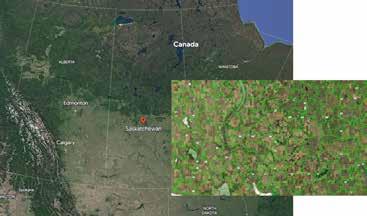
24 | ©BEEF BUSINESS | www.skstockgrowers.com SEPTEMBER 2023 FEATURE
Damon Johnson, MBA, DMS CFP FMA Chief Technology Officer Global Ag Risk Solutions
Sample of a mesh-grid structure polygon structure with GIS imagery that follows the bio-physical patterns of Canadian Prairie grassland
A Geographic Information System (GIS) is a computer system that analyzes and displays geographically referenced information from a variety of data sources to map and examine changes on Earth.
GIS allows for the integration and collective analysis of geospatial data from multiple sources, including satellite imagery, Global Positioning System (GPS) recordings, and textual attributes associated with a particular space.
GIS components include:

• Visualizations through interactive maps
• Data based on the location of features or variables represented


• Spatial analytic functions that focus on identifying trends and patterns across space and time
• Applications that enable tools and services in user-friendly interfaces
- National Aeronautics and Space Administration (NASA)



Essentially, this project combines the use of GIS imagery to create high-resolution maps that prevent information gaps. The mesh-grids create finer resolution for analysis and improved measurement.
Beef Business: What work has been completed?
Damon Johnson: We began the technical work in mid-December 2022, completed the rest of the project work for phase one in early spring 2023, and delivered the final report for phase one in April 2023.
The first phase involved four key activities.


We downloaded the GPI dataset into a structured database for processing.
Next, we developed precise data analytics in order to create an intuitive forage insurance product structure—one that is based on variable deductible and premium structures.
Then, we completed an actuarial analysis,

which included a full review of the GPI portfolio structure, risk rating, basic-risk mitigation factors, pricing and deductible structures in order to create an actuaryapproved rate table and pricing matrix.
And finally, we scoped the development of an Enterprise Management System (EMS) asset that includes access attributes with authentication and security protocols; a product enrolment interface with farm profile creation and land identification; an interactive GPI historical time series visualization; policy quote; application and claim settlement features; and the ability to connect with other systems and pathways—including web and phone apps.
Beef Business: Wow. The app you are developing will generate a no-obligation policy quote that is customized to the unique bio-physical patterns of any uniquely-identified land area using a smartphone or laptop with Wi-Fi access? And, it will provide a visualization of that specific land area?
Damon Johnson: Yes.
Beef Business: How long will it take me to enter my property’s coordinates and get a quote using my phone or to submit a claim?

Damon Johnson: We have designed all of our user interfaces (UI) so that a producer will be able to select and pay for coverage or submit a claim within a few clicks, and to remove as much sales friction as possible in the transaction process.
Beef Business: Could a producer call or visit an insurance provider to get the same service offerings that the app provides?

Damon Johnson: Yes, a producer could call or visit an insurance provider to get the same service offerings.
And, we expect many producers will do exactly that, which is why we are working lock-step with Saskatchewan Crop Insurance Corporation (SCIC), Manitoba Agricultural Services Corporation (MASC) and Agricultural Financial Services Corporation (AFSC) for the design and
continued on page 26
25 www.skstockgrowers.com | ©BEEF BUSINESS | SEPTEMBER 2023 FEATURE Dale Watson 306.861.4618 Austin Watson 306.861.7031 Brody Ward 306.861.7191 For safe and effective drug delivery, choose Pneu-Dart For more than 50 years, Pneu-Dart has offered the best remote injection equipment for your drug delivery needs.
196
Model
389 Less stress on the animal targetcattleconcepts@gmail.com targetcattleconcepts.com Follow us on Our Remote Drug Delivery (RDD) systems are designed to capture or medicate while minimizing stress on animals. Whether you're treating freerange cattle, sedating cervid livestock, or assisting in the translocation of wild animals, Pneu-Dart manufactures the products to handle every target situation. INC. BECAUSE YOU CAN’T AFFORD TO MISS® Canadian Distributor | Since 2012 High tech darts for ideal delivery No need to confine
Model
FEATURE
delivery of this project to their livestock producer customers.
When we release the products publicly, it will take producers about 10 minutes to access a policy quote for any unique land area using a laptop, smartphone, or by calling or visiting SCIC, MASC or AFSC in-person.
Beef Business: What tasks are underway in phase two?

Damon Johnson: We are working through a detailed statement of work with the provincial governments for each phase of this project, which includes back-testing historical data against ground-level observations over a long time series from existing programs such as forage rainfall insurance, satellite-based indexes and forage production programs.
We are fine-tuning the accuracy to ensure the actual ground truth data matches the claim and the government’s data gathered from the weather stations; and continuing to work on the user interface and marketing platform for the web and phone app.
To fund the advancement of the product toward commercializing a product pilot in 2024, we are in the final stages of entering our objectives and budgets into an application for continued support from the AgriAssurance Program.
We intend to deliver the final report for phase two in January 2024.
Beef Business: How are you developing the work plan for the third and final phase?
Damon Johnson: We are continuing to be highly-engaged with, and greatly supported by, Agriculture and AgriFood Canada (AAFC), Canadian Cattle Association (CCA) and SSGA.
Any future work on the product would need to incorporate the guidance of AAFC in relation to cost and risk share. Ongoing stakeholder engagement needs to run parallel to product development to ensure
the design elements match up with producers’ needs.
We connect by text, email, phone calls, in-person and in virtual meetings. Our communication style is to open and approachable. Being unified is important, which is why we have also conducted focus groups.
Beef Business: Connecting with a crosssection of ag producers is an excellent way to discover what matters most to them. What are you learning?
Damon Johnson: Our producer-based focus groups have clearly expressed a desire to pay smaller amounts more often. They want full-some risk programs that are available for the large loss years; and access to disaster risk and recovery programs.
They also want to measure risk as close to the farm as possible, and on a timely basis, which means they really appreciate that this technology assesses 12,000 individual points, measured between the 186 weather stations in Saskatchewan, which ensures each uniquelyidentified forage and pasture land area would be customassessed for a claim.
Beef Business: What has impressed you most about your interactions with fellow ag producers?

Damon Johnson: At times, private firms and public industry corporations are viewed as competitors in the crop insurance space. However, for this project, everyone is working together in a highly-collaborative way to achieve the same goals. We are focused on creating a win for everyone involved.
We know there is value in our research— and we are excited about what this product could mean to the future of the ag industry. We look forward to the next steps.
REFERENCES
National Aeronautics and Space Administration (NASA)
Earth Science Data Systems Program
https://www.earthdata.nasa.gov/learn/ backgrounders/gis
AIRBUS Defence and Space
https://www.intelligence-airbusds.com/ markets/agriculture/insurance-finance/ grassland-production-index/
Statistics Canada
Province of Saskatchewan
https://www12.statcan.gc.ca/censusrecensement/2011/as-sa/fogs-spg/Facts-preng.cfm?Lang=eng&GC=47
Global Ag Risk Solutions
Grassland Production Index Insurance Product Development
Final Report - Phase One, April 2023
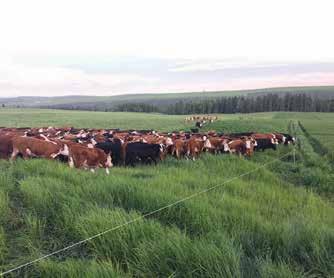
26 | ©BEEF BUSINESS | www.skstockgrowers.com
17 INDUSTRY The Benefits of this product include: • Your view and cutting ability won’t be hindered • It PROTECTS you and your windows • It COSTS LESS than replacing tractor glass • INSTALLATION TAKES AN HOUR OR LESS • It comes with a ONE-YEAR WARRANTY on parts and defects • The Rock Block REDUCES DOWNTIME for repair ARE YOU TIRED OF BREAKING WINDOWS WHILE CUTTING HAY? PROTECT YOU AND YOUR TRACTOR WITH A ROCK BLOCK Phone 605-216-4852 | Email john@therockblock.net www.therockblock.net Use promo code ABP2023 for a $50 DISCOUNT Toll Free: 1-877-COW-CHOW WWW.UNIONFORAGE.COM Graeme Finn 403-312-2240 Grant Lastiwka 403-350-6394 | Amber McNish 204-264-0609 Ben Stuart 780-888-7303 | Roger Meyers 306-221-1558 | Mark McNinch 306-845-8036 Mike Witt 250-558-9577 GRAZE YEAR ROUND! Perennial and Annual Grazing Forages Grazing and Haying Alfalfa’s Nutrient Dense Forages and Cover Crops Satellite-Based Pilot cont. from pg. 25 B
Between now and December 31st, 2023 active Members of the SSGA will receive a $1,250 Young’s Equipment Gift Card for Parts and/ or Service at any Young’s Equipment location with the purchase of any of the following new units:
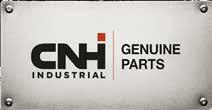
- Case IH MFD Loader Tractor (60-185 HP)
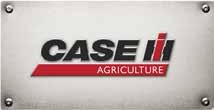
- Case IH RB565 Round Baler
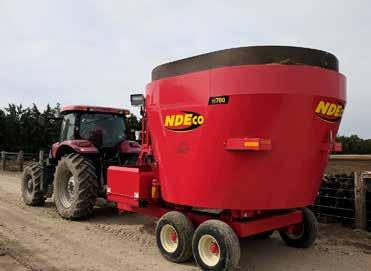
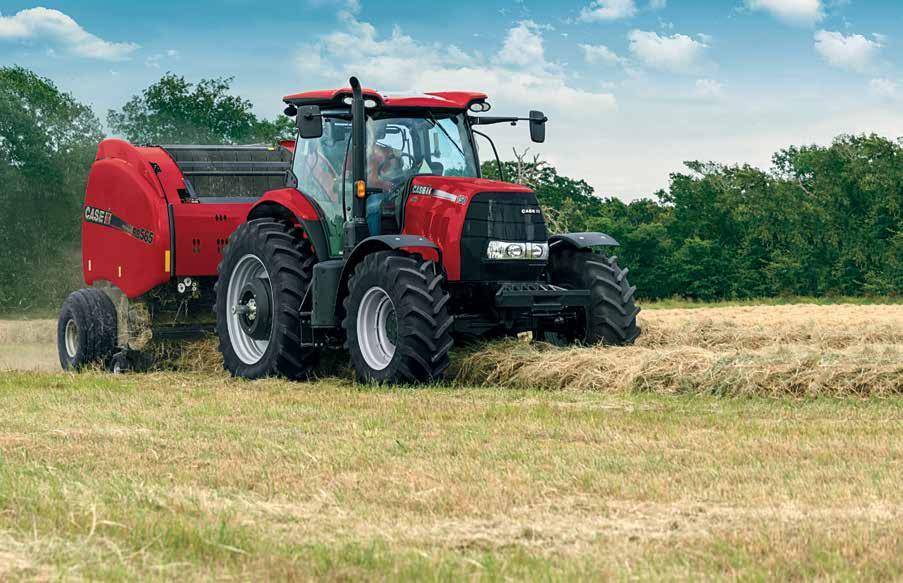
- NDE Vertical Mixer
- Highline *NEW* BP60 series Bale Pro®

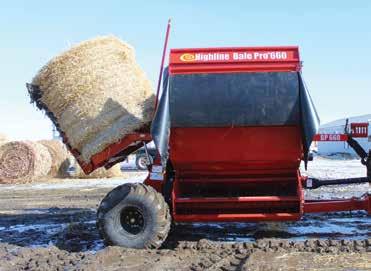


In addition to that, we will donate $250 per unit sold to the Saskatchewan Stock Growers Association to support their formidable cause.

New Global Language Impacting Livestock Producers
Dr. Tammy Nemeth

report not only on the emissions they have under their direct control, but they will also have to report Scope-3 emissions—that is everything else up and down their supply chain including those embedded in the animals that they are processing or feeding.
A trickle down or ripple effect will hit stock growers.
This means that when the company (a stock grower sells its animals to) requests the absolute emissions for the cattle, stock growers will have to calculate all the emissions they are directly and indirectly responsible for in their supply chains for each animal.
of quantification, like the fact that ranch land tends to be more arid or that there are already regional or provincial regulations concerning water use. An absolute number with no context is not useful. Water stress information should not be mandatory.
There are implications for stock growers if these elements of the standards are kept mandatory in Canadian implementation.
Given various commitments made by corporations to their large investors, processors and feeders may have to reduce the emissions profile of the livestock they purchase and or limit, over time, the amount of livestock or feed purchased from High or Extremely High Water Stress areas.
Western Canadian stock growers will face significant challenges over the next few years as the threat of global sustainability and climate-related standards being implemented in Canada is one step closer to reality.
Last year, in the pages of Beef Business, I introduced the International Sustainability Standards Board (ISSB) and explained two aspects of the standards that could be a costly burden for stock growers.
On June 26, 2023, the final standards were published by the ISSB. Although very little was changed from the proposed to the published standards, each jurisdiction must approve them before adoption, and the Canadian Sustainability Standards Board (CSSB) has said it will conduct consultations across the country before implementation. There is still time to express your concerns to the CSSB before the standards are implemented.
Before offering an example note to send to the CSSB, let us review the most problematic aspects of these standards for stock growers.
The standards are intended for investors, banks, and insurers and, from a stock grower perspective, the initial target for reporting with these standards are the large processors and feeders.
Processors and feeders will be required to
Scope-3 emissions means accounting for the emissions in: the feed you use; everything you use on your farm related to the livestock; the transporting of the livestock; the emissions after you have sold the livestock (such as its feeding and processing); the transporting of the finished product; the packaging; refrigerating; disposal of packaging; preparing and disposing of the final product—all of it will need to be calculated or estimated.
Since only absolute emissions are requested in the standards, there is no place to convey any carbon sequestration or reductions from operations. What is also concerning is that everyone else along that supply chain will probably also have to be reporting their Scope-3 emissions.
Therefore, a great deal of overlap and multiple accounting of emissions is created that will distort the industry’s and Canada’s emissions profile. Scope-3 emissions should not be mandatory.
In addition to mandatory Scope-3 emissions accounting, the standards also mandate the reporting of animals or products sourced from areas of “High or Extremely High Baseline Water Stress.” Large swathes of southern Manitoba, Saskatchewan and Alberta fall into such an area; Quebec and Ontario do not.
There is no room for context in this type
Given the commitments made by Canadian Banks and insurers to the Glasgow Financial Alliance for Net-Zero, they may also begin to limit their exposure to operations that have higher emissions than others in their portfolio or are in high water stress areas.
Concerns of Canadian stock growers expressed during last year’s ISSB consultations, require repeating and amplification to the CSSB. Every jurisdiction considering the standards can modify them to better represent the unique and specific economic and geographical characteristics of the nation. Now is the time to request that your voice is heard before it’s too late.
You can send a message to the CSSB that could say something like: “I am asking that before these global standards are implemented in Canada there be a full and open consultation with a broad range of stakeholders. Diverse feedback can assist you in adapting the standards to the particular circumstances unique to Canadian stock growers which may be underrepresented if only targeted consultation is undertaken.”
Requests can be sent to Lisa French at Financial Reporting & Assurance Standards Canada by email at lfrench@frascanada.ca and Roger Sobotkiewicz at Financial and Consumer Affairs Authority of Saskatchewan at fcaa@gov.sk.ca. B
28 | ©BEEF BUSINESS | www.skstockgrowers.com SEPTEMBER 2023 FEATURE
Dr. Tammy Nemeth Senior Analyst at ESG2 Insight, author of Counting Carbon Molecules, and host of The Nemeth Report podcast based in United Kingdom

29 www.skstockgrowers.com | ©BEEF BUSINESS | SEPTEMBER 2023 A new era of high efficiency feed begins now with Enogen™ corn. A NEW OF FEED BREED For more information about Enogen corn, contact your dealer, your Enogen Technical Sales Representative, or call our Customer Interaction Centre at 1-87-SYNGENTA (1-877-964-3682). Always read and follow label directions. Enogen™, the Alliance Frame, the Purpose Icon and the Syngenta logo are trademarks of Syngenta Group Company. © 2023 Syngenta.
Active Missing Livestock Files


August 10, 2023
All ca�le everywhere will get some kind of a bid no ma�er what type of hodge podge group they are in:
1. Mixed quan�ty (300 pounds from light to heavy) 2. Mixed quality 3. Mixed breeds 4. Growthy & non-growthy

Whoever buys them will make great money sor�ng them up and marke�ng them properly. There is no free lunch.
If you want top dollar the ca�le need to be professionally sorted and sold by compe��ve bid. No excep�ons. Why take one offer?
It might cost 3-4 cents per pound to get that done right, but it pays back 7 to 10 cents a pound.
“Professional” means some one who knows ca�le and knows the orders


Good quality oats always sell for more money than the kind that has already been through the horse!

30 | ©BEEF BUSINESS | www.skstockgrowers.com SEPTEMBER 2023 SCIENCE AND PRODUCTION
Area Missing From # of Head Animal Description Brand Description Brand Location RCMP Detachment Livestock Services of Saskatchewan Contact Date Reported RM #215 1 Gelding No brand Cpl Owen Third 306-537-9448 Yorkton 306-786-5712 June 20 RM #309 1 Bull Left hip Cpl Owen Third 306-537-9448 Saskatoon 306-933-7660 June 20 RM #561 1 Steer No brand Cpl Owen Third 306-537-9448 North Battleford 306-446-7404 June 20 RM #502 1 Steer calf Right hip Cpl Owen Third 306-537-9448 North Battleford 306-446-7404 July 10 RM #123 2 Cow / calf No brand Cpl Owen Third 306-537-9448 Yorkton 306-786-5712 July 13 RM #438 1 Bull Right hip Cpl Owen Third 306-537-9448 North Battleford 306-446-7404 July 26
BOX 1504 | WEYBURN, SK S4H 3N8 PHONE: 306-842-4574 | EMAIL: wle@weyburnlivestock.com Book them! Roy Rutledge! Weyburn Livestock Exchange!
Livestock Services of Saskatchewan

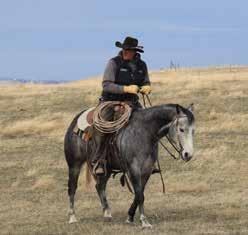
At the risk of sounding like a broken record, I am writing a reminder to all owners of livestock in Saskatchewan that the law continues to require a manifest be properly filled out before transporting livestock and keep it in their possession. The manifest is, when completed and used for commercial purposes, a legal document and form of contract.
As the industry moves to a more digital age and one of databases and directories that can be cross-referenced and searched for information, consignors and buyers need to pay attention to manifests, which provide a significant amount of critical data points required to conduct business.
Livestock Services of Saskatchewan (LSS) remains committed to the industry and provides reliable data available for the industry’s benefit. If you do not fill out your manifest correctly or need to add information or appropriate signatures, the LSS Inspector may ask you to complete the manifest fully, prior to the inspection.
In all inspections, the Inspector first verifies the manifest is complete and
Update on Annual Report and Reminder
Jason Pollock
then inspects the cattle. This order of events is necessary to ensure that LSS is providing the industry with what they need from the inspection program. From time to time, you may get a call to verify information (i.e., address, phone number, etc.) on the manifest to ensure its accuracy.
I will be the first to admit that I am guilty of providing some poor handwritten scribbles to Inspectors over the years.
All manifests must include:
• The Full address, rural municipality (RM) and telephone number of the owner and contributor;
• The Number of animals and their destination;
• The Animal description and brands; and
• The Signature of the owner or owner’s designated agent.
A properly completed manifest identifies the owner of the livestock, directs the proceeds of the sale, helps to prevent livestock theft, and ensures accuracy of processing payments. It also facilitates future movement reporting, transfer of care, humane transport regulations and other industry requirements as required.
We live in a data-driven world, and our response has been to use existing tools at our disposal to make the data collection and required processes for reporting as simple as possible for the producer. If you have questions or require any assistance with the manifest, do not hesitate to contact your local Inspector for help.
This is why we exist, to facilitate commerce and uphold legislative requirements for the benefit of the industry.
This last point is an excellent opportunity
Optional information to include on the manifest is the premises identification number (PID) of origin and destination. Any additional information required by the Humane Transport Regulations or pending Animal Movement Regulations may also be recorded on the manifest for the owner’s records.
to provide an update on the past fiscal year of operations for LSS. The year 2022/2023 was financially-successful for LSS, barely. When the dust settled, LSS had a positive excess of revenue over expenses of $82,696. While this does qualify as a success, the liquidation and shrinkage of the provincial herd is a large risk to future profitability and sustainability for the organization.
As inspection numbers decline and inflation places unmitigated pressure on LSS expenditures, the Board has implemented financial strategies to delay a fee increase. There is no question that a fee increase is something that the industry and LSS will need to wrestle with in the future.
The inspection process provides a high positive return for the industry investment and is a critical safeguard to all owners of livestock across the province.
In summary form, I am pleased to present the following value analysis to you on the past year of operations.
VALUE ANALYSIS 2022-2023
LSS maintains an objective analysis of the services provided and their measurable and perceived value to the livestock industry of Saskatchewan. Efforts in diligence and consistency in communication are paying dividends in the form of improved compliance by producers/ transporters in general.
continued on page 32
31 www.skstockgrowers.com | ©BEEF BUSINESS | SEPTEMBER 2023 SCIENCE AND PRODUCTION
Chief Executive Officer Jason Pollock
AND PRODUCTION
NOTE: An estimated average value of $1,750 per head is used below for cost/value reporting and a calculation of $2.75 per head revenue for all livestock inspected. The net operational revenue will not reconcile exactly with the attached financial statement.

As our industry changes and adapts to the ever-increasing data-driven world, we are confident that with leadership from Saskatchewan Stock Growers Association (SSGA) and LSS’s other owners we are capable of meeting future challenges and opportunities.
LSS is owned by the five major livestock groups in Saskatchewan. SSGA plays an important role in providing input and oversight to the strategic goals and objectives of the organization. LSS appreciates the continued support and input of SSGA.
LSS Annual Report cont. from pg. 31 B

32 | ©BEEF BUSINESS | www.skstockgrowers.com SEPTEMBER 2023
Cost
Revenue collected on 1,637,162 head $4,512,223 (Less) Commission paid to livestock dealers for remitting inspection fees ($40,283) Total $4,471,940 Qualitative Benefits
Livestock
LSS Inspection and
$$$$ Security provided to
institutions
$$$$ Licensing administration and security held in trust
$$$$ Management of the Provincial Brand Registry (11,001 Registered Brands) $$$$ Quantitative Benefits to the Saskatchewan Livestock Industry Proceeds redirected to rightful owner on 2,905 head $5,083,750 Stray animal identification of 95 head $166,250 Reported missing or stolen livestock totaling 621 head $1,086,750 Cattle/proceeds withheld for clearance of 7,664 head $13,412,000 Approximate value of legislated use documents supplied (manifests, permits, etc.) $88,000 Measured Benefit to the Saskatchewan Livestock Industry $19,836,750 Net Measured Value to the Saskatchewan Livestock Industry Total Benefits less Total Cost $15,364,810
SCIENCE
to Saskatchewan Livestock Industry
to the Saskatchewan
Industry
Movement Database utilized by Ministry of Agriculture / Canadian Food Inspection Agency
credit
allowing producers access to affordable credit
by 124 Dealers and 293 Agents
Phone: 306.272.6284 | Foam Lake, SK www.milliganbio.com FAT PROTEIN 37% CONTENT 15% TDN 86%
Anytime, Any Season, All Cattle
Cows - Calves - Bulls


Two Technologies, One Bottle
Endovac Vaccine
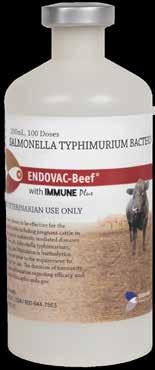

Pasteurella & Mannheimia vaccine for Respiratory Protection
Immune Plus
Activates Immune System for a stronger response
Safe and Effective without negative active endotoxins
Protection from E. coli and Salmonella
Only Immunostimulant to be packaged in the convenience of a vaccine
Easy to Use, no mixing, low 2 mL dose
Water Infiltration Research: After Two Years, A Story Unfolds
Blake Weiseth
In the September 2022 issue of this magazine, I shared results from the first season (2021) of one of my research projects being conducted at Discovery Farm Langham. With 2023 harvest quickly approaching, my goal in this article is to provide an update of what I have observed over the first two project years.
As a refresher, the overall goal of my project is to evaluate the performance of various management practices for their ability to utilize nutrients efficiently through reducing losses in snowmelt runoff water. With the focus on mitigating losses in runoff water, the management practices under consideration were applied to water-accumulating portions of the field site.
Ultimately, my interest is to track the movement of nutrients, particularly phosphorus, through the soil-plantrunoff water system. There are four management practices that I’m evaluating as treatments:
1) Control treatment (annual grain crop managed by standard practices);
2) Annual grain crop with post-harvest residue management (light tillage);
3) Annual grain crop with variable-rate fertilizer application; and
4) Annual forage polycropping.
For the 2022 season, the annual grain
crop was wheat and the forage polycropping mixture consisted of Hairy Vetch (30 per cent), Crimson Clover (25 per cent), Tillage Radish (25 per cent), and Turnips (20 per cent). Growing season precipitation (May to August) was 165 millimetres versus 126 millimetres in 2021.
Grain and straw yield for 2022 crop year is shown in Figure 1.
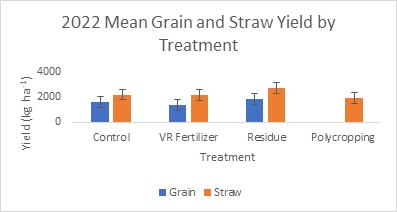
The average dry biomass yield for the annual forage polycropping treatment was 1,942 kg ha-1, which was statistically comparable to that of the control treatment seeded to wheat (2,211 kg ha-1).
It is important to note that the forage polycropping treatment was able to achieve comparable straw yield to the control treatment despite applying a reduced fertilizer application rate during spring seeding ( Table 1). Therefore, the ability of the forage polycropping treatment to utilize residual soil nutrients efficiently (especially phosphorus), is notable.
Further, the forage treatment’s ability to access nitrogen over the growing

season is aided by inclusion of nitrogenfixing legumes in the species mix. Also noteworthy regarding strategies to promote nutrient use efficiency is the ability of the variable-rate fertilizer treatment to achieve statisticallycomparable yields to the control treatment despite reduced fertilizer application. The performance of this treatment in 2022 is consistent with what was observed in 2021.
Beyond evaluating the agronomic performance of each of the treatments of management practices, this project also seeks to evaluate their environmental performance regarding their ability to mitigate phosphorus losses in runoff water.
To achieve this goal, in-tact soil slabs were removed from each of the treatment areas and were subjected to a simulated snowmelt runoff event,
34 | ©BEEF BUSINESS | www.skstockgrowers.com SEPTEMBER 2023 SCIENCE AND PRODUCTION
Blake Weiseth MSc. P.Ag Applied Research Lead Glacier FarmMedia Discovery Farm Langham, Saskatchewan
Treatment N Application Rate Kg N ha -1 % N Relative to Control P Application Rate Kg P2O5 ha -1 % P Relative to Control Control 76 100 68 100 Forage Polycropping 56 74 28 41 Variable-Rate Fertilizer 60 80 60 88
Table 1. Nitrogen and phosphorus fertilizer application rates according to treatment.
Figure 1. 2022 Mean grain and dry biomass straw yield according to treatment.
where a predetermined amount of snow is added to the surface of the frozen soil slab and allowed to melt under controlled temperature conditions to reflect field conditions during the spring snowmelt (Figure 2).
Snowmelt water samples are then collected and analyzed for soluble reactive inorganic phosphorus (SRPi), a highly bioavailable P form that represents the dominant form lost from agricultural fields of the Canadian Prairies.
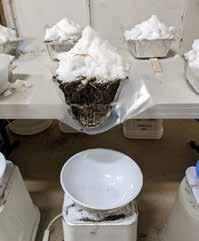
In addition to these snowmelt runoff simulations, runoff water samples were also collected from each treatment area from the field, along with measurements of runoff water volume made from calibrated weirs installed in the field.
Results of the snowmelt runoff simulations from samples collected in spring of 2022 and 2023 are shown in Figure 3 and Figure 4, respectively. While not statistically significantly different from other treatments, the measured SRPi concentration was lowest for the forage polycropping treatment in both the 2022 and 2023 samples.


Further, the mean SPRi concentration from the variable-rate fertilizer treatment was also lower than the control treatment in both years. When considered along with the yield data presented earlier, both variable-rate fertilizer application and annual forage polycropping appear to be beneficial management practices in terms of promoting nutrient use efficiency when applied to water-accumulating areas of the field, as was done in the current study.
The work described here will continue throughout the 2023 to 2025 seasons. While encouraging results have been shown in the project thus far regarding management strategies to promote nutrient use efficiency, the future work will be important to validate the preliminary results reported here.
This work would not be possible without the support of several organizations, including Saskatchewan Stock Growers Association, Saskatchewan Soil Conservation Association, Saskatchewan Canola Development Commission, Saskatchewan Wheat Development Commission, and Water Security Agency.
Finally, technical support and expertise from SWAT MAPS is gratefully appreciated.
35 www.skstockgrowers.com | ©BEEF BUSINESS | SEPTEMBER 2023
Figure 4. SRPi concentration in simulated snowmelt runoff water by treatment from in-tact soil slabs collected in spring 2023
Figure 3. SRPi concentration in simulated snowmelt runoff water by treatment from in-tact soil slabs collected in spring 2022
B SCIENCE AND PRODUCTION
Figure 2. Experimental setup for snowmelt runoff simulation, showing snow added to frozen in-tact soil slab.
Managing a Short Feed Supply
Maddy Lazurko
may stay on pasture longer into the fall, helping to conserve stored winter feed and still meet their energy needs. Creep feeders are a good option to take pressure off the cows while on pasture, replacing energy from milk and reducing the lactation demands of the cow.
Managing the calf
heavy snow comes early in the fall or stays late into the spring and winter feeding is extended. Other data to collect includes number of head, size of animals, and estimated intake.
Maddy Lazurko Consulting Ruminant Nutritionist BeefSmart Consulting Inc.

Lower than average precipitation and high temperatures have caused feed shortages through the Western provinces and conditions are exacerbated when they occur year after year. Between pastures drying up faster and earlier than usual and low tonnage on cultivated acres, the outlook for winter feeding may be daunting.
While drought conditions can cause strains on feed supply and the budget, there are some key management practices to consider to help mitigate the feed shortages, reduce costs, and ensure your cows maintain health and condition to continue to produce a viable calf, successfully.
How do I take the pressure off the cow and my pastures?
The nutritional requirements of a lactating cow far exceed those of a dry cow. For that reason, early weaning is something to consider when pasture is looking poor. This can take the pressure off both the pasture and cows as the dormant, highfibre grass can more closely meet the needs of a dry cow.
If cows lose condition with calf at foot, there can be reproductive consequences for years to come. By weaning early, cows
If early weaning is a possibility, there are some factors and questions to consider. Will the calves be sold immediately, or retained and fed? If they are retained, what feed is available to meet their nutritional requirements?
While early weaning is an excellent option for drought conditions, young calves are at greater risk for illness, especially when stressed. Abrupt changes in social and nutritional environments that occur at weaning are some of the main causes of illness.
Therefore, availability of good quality feed, clean water and adequate space and shelter from the elements, can help to alleviate the stress of weaning. Dry, clean ground and adequate space for the calves can drastically reduce disease prevalence.
It is important to consult your veterinarian regarding appropriate vaccination protocols and handling practices to reduce disease burden on young calves.
What is your feed inventory?
Creating a comprehensive feed inventory far before cows come off pasture is essential when dealing with feed shortages. This creates an opportunity to plan for the entire winter, know where your shortages will be, and purchase feed to support your animals’ nutritional requirements for the duration of the winter-feeding season.
It is important to be generous when calculating potential days on feed in case
Once these numbers are collected, feed tests and consultation with a nutritionist can help determine your true feed inventory. With this information, a plan can be created to utilize feed most effectively and maintain body condition and mineral status at least cost.
How do I extend my feed inventory?
Alternative feeds can increase fall grazing and reduce the use of stored feeds. Alternative feeds are simply feeds that we would not typically feed cattle. During drought conditions, it is important to consider all options. This includes grazing crop residues, feeding by-products and even baling weeds.
Careful consideration is needed when deciding to utilize an alternative feed. Some non-traditional cattle feeds have the potential to accumulate high levels of toxins or minerals at levels that can be dangerous to the health of the animals.
Brassicas such as canola can accumulate sulfur. These levels must be taken into consideration along with the sulphate level in the water to ensure they do not exceed safe levels and water mineral content can change drastically when precipitation patterns change.
Weeds such as kochia, when mature, will contain oxalates in the seeds. Oxalates are toxic to cattle and can cause death at high levels.
Most small grain plants will accumulate nitrates after a stress event such as drought or frost. After a stressful event, these plants quickly accumulate nitrates in the stem. Nitrates will dissipate within two weeks if the plants are still alive and
36 | ©BEEF BUSINESS | www.skstockgrowers.com SEPTEMBER 2023 SCIENCE AND PRODUCTION
actively metabolizing. If there is a killing frost, nitrates can accumulate and will remain in the harvested plant tissue.
Knowing what is in the feed by testing is key to feeding non-traditional ingredients. Cattle are excellent converters of lowquality fibre into energy.
What do I need to consider if hauling the cows to feed?
If feeding cows at home is not an option, hauling cows to the feed might be. Areas in neighbouring provinces have more moisture, and therefore ample forage available. Sending cows to these areas can alleviate the stress of finding pasture and forage at home. While this is a viable way to source feed for your cows, it is
essential the custom feeder is aware of your expectations for the condition of your cows throughout the fall and winter period.
It is important to assess body condition and health as regularly as you would if they were at home. If sending cows to a feedlot to be fed over the winter, it is important to know that cows cannot be fed on a high grain diet for extended periods without risk to their body condition and reproductive health.
Additionally, low quality diets that do not meet their energy and protein requirements will create problems come breeding time. Ensuring the custom feeder is reputable is important. Word of mouth and testimonies for custom feeders
is one of the best sources of information. While the need to cut operational costs is likely inevitable in a drought, having knowledge of what you are feeding and if it will meet the nutrient requirements of your cows, is imperative. The goal is to maintain healthy cows that breed back no matter what you are feeding them. Feed testing is the best tool for ensuring this outcome.
Drought is stressful and difficult to manage for all ranchers, but active planning and winter preparation can reduce economic impact and prevent long-term production problems. Consulting a nutritionist to discuss winter feeding ideas and options can alleviate some stress during these trying times. B
Honourary Lifetime Membership Goes to Sherri Grant
Discover the Farm in Swift Current.
Sherri has served on many boards over the years including Canadian Western Agribition, Val Marie Ambulance and Saskatchewan Crop Insurance Corporation. She was awarded the Farm Credit Canada Rosemary Davis Women in Agriculture Award in 2013, Farm & Food Care Saskatchewan’s Food and Farming Champion Award in 2018 and BMO Women in Agriculture Award in 2019.

Val Marie, Saskatchewan
For three decades, Sherri Grant has worked with industry partners to ensure information on beef production reaches tens of thousands of school children, educators and parents through the Agri-Ed Showcase at Saskatoon’s Ag Experience, Regina’s Canadian Western Agribition, Yorkton Grain Millers Harvest Showdown, Prince Albert Ag Education Showcase, Ag Adventures in Regina, Agriculture in the City in Saskatoon, Colonial Days in Lloydminster and
To celebrate her 30 years as an invaluable industry advocate and communications specialist, Saskatchewan Stock Growers Association (SSGA) recognized Sherri Grant for her contribution to the province and the livestock industry by presenting her with an SSGA Honourary Lifetime Membership on June 5th at the 110th Annual General Meeting & Convention held in Moose Jaw.
Congratulations and thank you, Sherri Grant, for your dedication as an educator and industry advocate!

37 www.skstockgrowers.com | ©BEEF BUSINESS | SEPTEMBER 2023
SCIENCE AND PRODUCTION
Sherri Grant
B
Sherri Grant receives Honourary Lifetime Membership plaque from SSGA President Garner Deobald at SSGA AGM in June 2023
A Report from Garner Deobald President, Saskatchewan Stock Growers Association
assessment to take forward to the federal government.
forage compared to writing off a grain or oil seed crop at a reasonable minimum is a concern.
President Garner Deobald Saskatchewan Stock Growers Association
It has been an interesting summer to say the least with news being good, bad and everything in-between.
Markets are definitely the highlight good news of 2023! With futures markets strengthening, consumption and export markets robust—all expectations point to record-high feeder calf prices through the fall and into 2024.
At the recent Canadian Beef Industry Conference in Calgary, CattleFax Analyst Duane Lenz of Castle Rock, Colorado, was very bullish on the fed cattle market with the forecast showing a year over year increase going through 2026. He said there are no signs of a cowherd rebuild at the moment, and it looks like one may be delayed, which puts us in a good position for the foreseeable future. This outlook is certainly promising, and we can hope and pray it is better than most five-day weather forecasts!
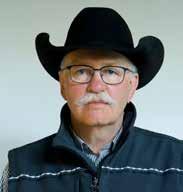
The growing season for a significant part of the province was reasonably good producing average yields for forage and crops. On the flip-side, drought conditions continue making this one of the most prolonged drought periods in Saskatchewan’s history.
We are thankful the Government of Saskatchewan and Saskatchewan Ministry of Agriculture recognized early that the drought conditions continued, and they were prepared to start an AgriRecovery
At the time of writing this article, the provincial government’s announcement of $80 per head in additional funding support for drought-plagued ranchers, is very welcome to us, and we thank them for the assistance. Targeting ranchers and farmers based on need is the right approach to this year’s program, compared to an all-encompassing province-wide program that was the basis for the 2021 drought assistance program.
As of the end of August, the federal government had not yet completed their review of the AgriRecovery assessment. However, I am hopeful they are prepared to back the provincial initiative and provide additional support for the industry. The delay, in part, may be due to the cabinet shuffle that saw the return of the Honourable Lawrence MacAulay, Cardigan Member of Parliament, to the post of Minister of Agriculture and Agri-Food.
On that note, SSGA welcomes Minister MacAulay back to this post! We look forward to working with him shoulder to shoulder, once again.
If the support programming is equal to the province-wide support ranchers and farmers received in 2021, we know, with the overhead and cost of production being much higher, the $200 per cow will not go as far to cover costs.
This brings me to the need for Business Risk Management (BRM) programs that work consistently for the livestock industry. We have crop insurance programs that are helpful; however, I have listened to many callers from across the province with concerns that guaranteed coverage is much different for forage producers compared to grain growers.
The measuring processes for writing off crops is an example that comes up often—having to measure every blade of
I also must recognize programs that are helpful, but not entirely fair or accurate— such as rainfall insurance. This year, we saw a record payout for this program, but I am still hearing of cases that rainfall is not measured accurately down to the farmgate level—with few weather stations covering a vast region of range and farm land that result in gaps of measurement accuracy.
I am hopeful that technology will advance to help out by providing better accuracy. BRM programs will make a huge difference for many ranchers and farmers. However, we must make every effort to improve those program and ensure they are giving us the necessary backing when needed—instead of having to rely on infrequent ad hoc support.
Let us enjoy the robust markets and plan for growing cow numbers when mother nature allows. I am certain that we are due! Even though strong markets afford an opportunity for profitability, challenges need to be managed.
If you have ideas or suggestions of how SSGA can make improvements or advocate for our industry, we would love to hear from you. We appreciate your thoughts and participation.
In closing, I want to thank SSGA’s Board of Directors, General Manager Chad MacPherson and staff for their continued hard work. I would also like to thank all SSGA members for your continued support—and if you are not yet a member, please consider joining this great organization by purchasing a membership.
Until next time…
Garner Deobald
38 | ©BEEF BUSINESS | www.skstockgrowers.com SEPTEMBER 2023 ASSOCIATION NEWS AND REPORTS
Garner
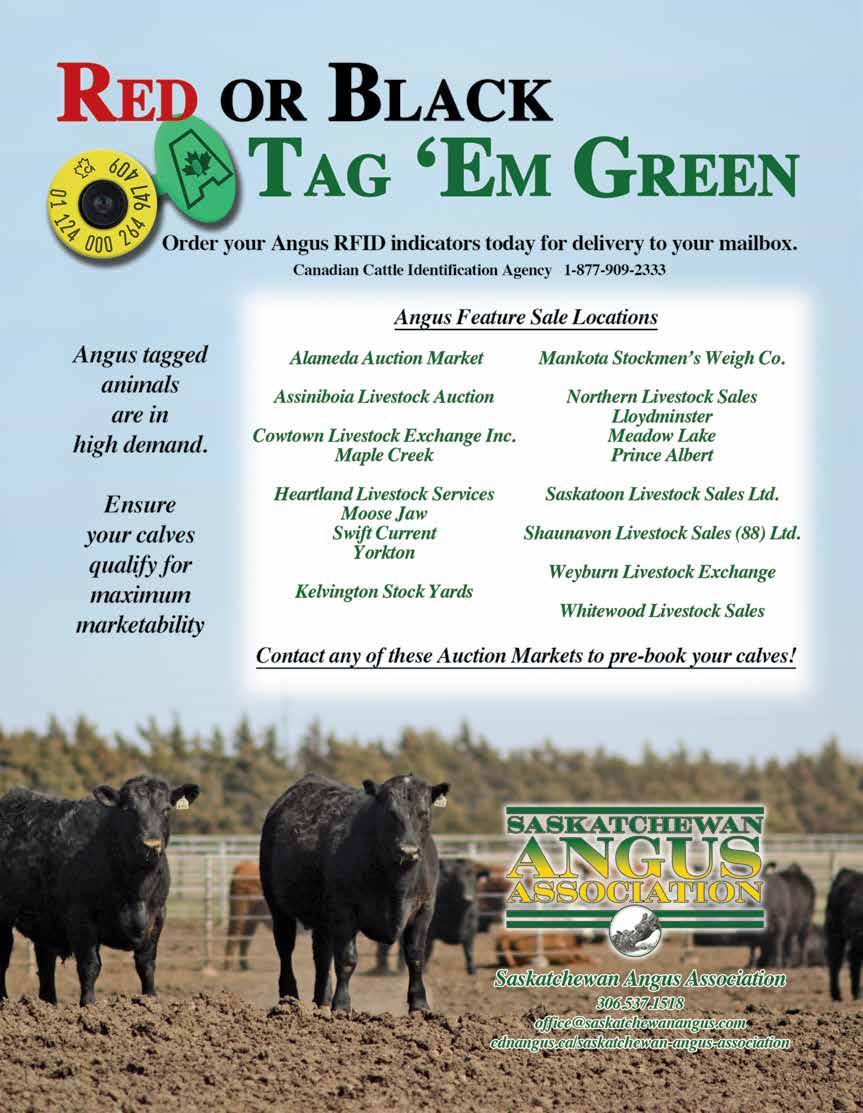
Saskatchewan Stock Growers Association 2023 Annual General Meeting Resolutions
Resolution #1
WHEREAS the Government of Canada’s proposed changes to traceability requirements are cost prohibitive and not necessary in Saskatchewan; and
WHEREAS the majority of the cost burden of the regulation is going to fall to the primary producer;
BE IT RESOLVED that Saskatchewan Stock Growers Association (SSGA) lobby the federal government to scrap the proposed changes.
Resolution #2
WHEREAS agriculture theft is a major problem in Saskatchewan; and
WHEREAS the Royal Canadian Mounted Police (RCMP) Livestock Investigator position has improved livestock investigation services and reduced livestock theft in Saskatchewan;
BE IT RESOLVED that SSGA lobby the provincial and federal government to maintain the Livestock Investigator position and look at expanding the program.
Resolution #3
WHEREAS the Resilient Agricultural Landscapes Program (RALP) and the Sustainable Canadian Agricultural Partnership (S-CAP) provide funding for beneficial management practices; and
WHEREAS RALP and S-CAP do not allow environmental non-governmental organization (ENGO) groups groups to top up funding;
BE IT RESOLVED that SSGA lobby the provincial and federal government to allow environmental non-governmental organization (ENGO) groups to top up RALP and S-CAP projects.
Resolution #4
WHEREAS Canadian feeder animals being exported to United States are required to be branded with the CAN brand; and
WHEREAS Canadian breeder animals being exported to United States are required to be tattooed with the CAN tattoo; and
WHEREAS the CAN brand and tattoo requirements were implemented following the discovery of BSE in 2003; and
WHEREAS Canada’s Bovine Spongiform Encephalopathy (BSE) status has been upgraded to negligible risk;
BE IT RESOLVED that SSGA lobby Canadian and United States officials to eliminate the CAN brand and tattoo requirements.
Resolution #5
WHEREAS foreign animal diseases (FAD) pose a significant threat to the Canadian livestock industry;
WHEREAS Canadian livestock producers have no assurances or programs for animals not directly ordered destroyed in the event of an FAD outbreak;
BE IT RESOLVED that SSGA lobby the Government of Saskatchewan and Canada to develop risk management programs to protect livestock producers in the event of an FAD outbreak.
Resolution #6
WHEREAS agricultural land values continue to increase over time; and WHEREAS the Lifetime Capital Gains exemption has not been adjusted since 2015;
BE IT RESOLVED that SSGA lobby the Government of Canada to increase the Lifetime Capital Gains exemption to keep pace with inflation rates.
Resolution #8
WHEREAS cover cropping continues to increase in popularity in Saskatchewan; and
WHEREAS Saskatchewan Crop Insurance Corporation (SCIC) does not currently offer coverage specific to cover crops;
BE IT RESOLVED that SSGA work with SCIC to develop and create a sound forage insurance program for an evolving cover cropping sector.
Resolution #9
WHEREAS the Environmental, Social &
Governance (ESG) is a tool being proposed by major lending institutions in Canada; and
WHEREAS the ESG framework is a tool that can enable third-party entities and unelected officials to influence and interfere with political processes through restrictions on access to capital; and WHEREAS the restriction of capital allows these entities to manipulate all levels of government and individuals;
BE IT RESOLVED that SSGA lobby all levels of government to prevent the implementation of ESG.
Resolution #10
WHEREAS the ESG is a scoring system for corporations to rate their performance based on changing societal values; and
WHEREAS the ESG is a form of social credit scoring designed to impose values deemed important by third party nonelected individuals; and
WHEREAS it is important to let individuals and society have the freedom to choose their own values without interference;
BE IT RESOLVED that SSGA lobby all levels of government against all types of social credit tools.
Resolution #11
WHEREAS Transport Canada has implemented mandatory electronic logging for livestock and agriculture transporters; and
WHEREAS raw agricultural products are perishable in nature; and
WHEREAS e-log hours of operation limits can have negative impacts on animal welfare outcomes;
BE IT RESOLVED that SSGA lobby Transport Canada to harmonize livestock transport regulations with the US Motor Carrier Regulations for livestock transportation.
Resolution #12
WHEREAS the Government of Canada is putting in new carbon protocols in place; and
40 | ©BEEF BUSINESS | www.skstockgrowers.com SEPTEMBER 2023 ASSOCIATION NEWS AND REPORTS
WHEREAS the new carbon protocols will impact livestock and farming businesses;
BE IT RESOLVED that SSGA lobby the Government of Canada for longer and more in-depth consultations and ask the Government of Saskatchewan for help in making a third-party verification process through them.
Resolution #13
WHEREAS the province of Saskatchewan has a robust premises identification and manifest program; and
WHEREAS changes to traceability regulations are being proposed due to jurisdictions that do not have robust movement records;
BE IT RESOLVED that SSGA lobby Canadian Food Inspection Agency (CFIA) to recognize livestock manifests under the traceability and transportation regulations.
Resolution #14
WHEREAS CFIA is a barrier to trade and competitiveness; and
WHEREAS the United States Department of Agriculture (USDA) is a trade promoting organization;
BE IT RESOLVED that SSGA lobby the federal government to modernize CFIA’s mandate to allow producers to compete with US producers.
Resolution #15
WHEREAS trade barriers are being removed on the importation of beef from countries with known Foot and Mouth Disease (FMD) outbreaks;
BE IT RESOLVED that SSGA lobby the federal government to increase inspections on all beef imported from South and Central America.
Resolution #16
WHEREAS the Government of Canada is in the process of implementing new traceability regulations; and
WHEREAS producers are going to be required to record and maintain animal movement records; and
WHEREAS S-CAP funding for tag readers is restricted to Verified Beef Production Plus (VBP+) certified producers;
BE IT RESOLVED that SSGA lobby the Government of Canada to provide
cost-shared funding for traceability technologies for all livestock producers.
Resolution #17
WHEREAS the proposed CFIA traceability regulations require all comments to be submitted through their online system; and
WHEREAS it is assumed that producers have Internet access and have the ability to use the online system;
BE IT RESOLVED that SSGA lobby CFIA to extend the submission deadline and offer producers other options for submitting comments.
Resolution #18
WHEREAS the carbon footprint of cattle is being skewed by the carbon agenda; and WHEREAS cattle play an important role in the health of one of the most endangered ecosystems in Canada; and WHEREAS cattle can utilize feed by-products humans cannot eat and convert it into high quality protein; and WHEREAS 99 per cent of cow by-products are used to manufacture products that we use every day;
BE IT RESOLVED that SSGA lobby the Government of Canada to reconsider their emission equation.
Resolution #19
WHEREAS carbon initiatives are hurting Canadians, small business and the farming industry; and WHEREAS the cost of food is being driven up by unrealistic climate initiatives;
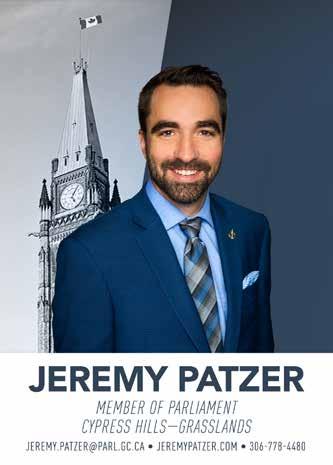
BE IT RESOLVED that SSGA lobby the Government of Canada to protect our food system from policies that cause cost increases that threaten the viability of small businesses and farms across the country.
Resolution #20
WHEREAS attendance at SSGA Semi-Annual General Meeting has been low, and it is important to maintain
connection with the membership; and WHEREAS Saskatchewan Livestock Association no longer exists and SSGA has taken over the management of the Honour Scrolls; and
WHEREAS SSGA will need a time and event to give the honorees the recognition they deserve;
BE IT RESOLVED SSGA choose a new date to hold the Semi-Annual General Meeting, followed by a banquet and presentation of the Honour Scrolls.
Resolution #21
WHEREAS Farm Credit Canada offers seven-year transition loans; and WHEREAS seven years can be too short of a term for successful succession planning; BE IT RESOLVED that SSGA lobby Farm Credit Canada to extend the term of their transition loans.
41 www.skstockgrowers.com | ©BEEF BUSINESS | SEPTEMBER 2023
ASSOCIATION NEWS AND REPORTS B
Wilma Rose Switzer Celebration of Life
their family. After their kids graduated high school, they made the move to Regina Beach where they have resided for the last 26 years.
Wilma was very active in the community volunteering as a Brownie leader, organizing the rink canteen, and coaching ringette.
Wilma returned to work in 1984 when she agreed to temporarily help Al in the RM Construction office. She worked there until they sold the business in 2006. The RM Construction crew always held a special place in Wilma’s heart and were often a source of humour and frustration.
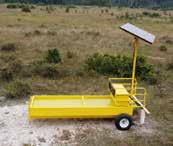
Wilma Rose Switzer (née Bell) passed away peacefully on Thursday, May 25, 2023, after a long battle with lung cancer at the age of 77 years.
She was predeceased by her infant son Wade; father William Cleveland Bell; mother Rose Windsor; and step-father George Windsor.
Wilma is survived by her loving husband Allan Switzer, children Trina (Darren), Shad (Leslie), and Leah.

Wilma’s pride and joy were her seven granddaughters Jadyn (Triston), Jasmine, Taryn, Kaia, Avery, Rayna, Summer, great-granddaughter Nora and she was anxiously awaiting the arrival of Elinor.
Wilma is also survived by her sister Barb (Ray) Knowles, estranged brother Bill Bell, Switzer in-laws Lawrence (Jan), Linda (Don), Donna, Joan, Barry and Karen (Dale), as well as numerous nieces and nephews.
Wilma was born on November 18, 1945, in Brandon, Manitoba. After graduation Wilma worked at SaskTel as a switchboard operator for nine years.
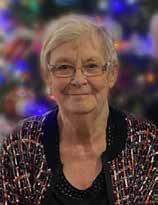
Wilma and Al met in Moose Jaw in 1967 and married on October 26, 1968. They lived in Saskatoon and Regina before settling in Pilot Butte where they raised
Wilma wasn’t ready for retirement, so she went to work in the offseason for Saskatchewan Stock Growers Association (SSGA) as the organization’s administrative bookkeeper from 2008 until she retired in 2016.
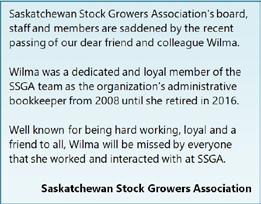
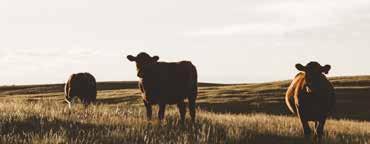

Wilma continued to do bookkeeping work from home and was always happy to babysit her granddaughters any chance she got.
Wilma had a deep love of gardening and watching sports, her favorites were figure skating, curling, and of course the Roughriders.
Wilma showed us all just how determined and courageous she was when she received her lung cancer diagnosis in April of 2016, and she never stopped fighting.
42 | ©BEEF BUSINESS | www.skstockgrowers.com SEPTEMBER 2023
A celebration of Wilma’s life was held in Regina Beach. Interment was held at Regina Beach Cemetery.
ASSOCIATION NEWS AND REPORTS
Donations in Wilma’s memory may be made to the Canadian Cancer Society.
B
Wilma Rose Switzer Regina Beach, Saskatchewan 1945 - 2023
Your competitive edge in a dynamic industry

To stay competitive and profitable, you are challenged to look at both sides of the equation –the day-to-day costs, trends, and influences on your bottom line, as well as the key operational considerations. From minimizing your tax exposure to optimizing your operations, we’re here to help you get the most from your livestock operation.
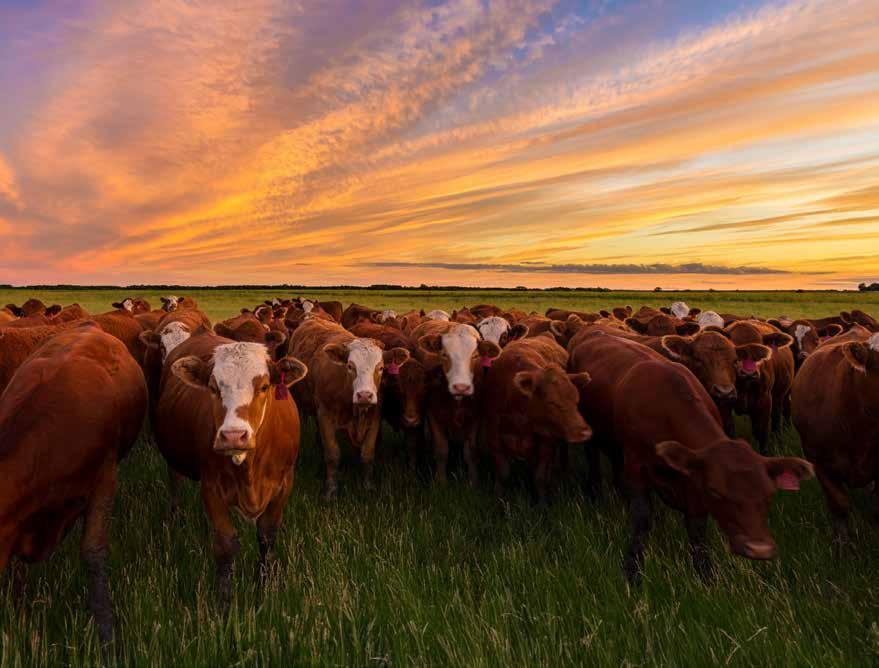
43 www.skstockgrowers.com | ©BEEF BUSINESS | SEPTEMBER 2023
Olynyk, CPA, Partner | 306.751.8043 | roxanne.olynyk@mnp.ca
MNP.ca Roxanne


WEATHERING StormTHE SSGA 110th AGM & CONVENTION June 4 - 6, 2023 Moose Jaw, SK Thank You to Our Sponsors Thank You to Our Tradeshow Exhibitors Boehringer Ingelheim Canada Brandt Tractor Ceres Industries Cows in Control Huber Equipment Merck Animal Health NorthStar Genetics Range Ward Renn Mill Center Inc Saskatchewan Angus Association Saskatchewan Livestock Finance Cooperative Saskatchewan Ministry of Agriculture Saskatchewan Stock Growers Foundation Saskatchewan Verified Beef Production SODCAP STOCKBOSS Energyfree Livestock Waterer SweetPro Canada Union Forage Water Security Agency Young’s Equipment Heritage Farm Credit Canada JGL RealAgriculture Saskatchewan Ministry of Agriculture Western Litho Printers Western Producer Silver Anderson & Company Brett Young Seeds Canada Beef Ducks Unlimited Canada Elanco Animal Health Helium Evolution MNP Scotia Bank Still Hill Ranch - Calvin & Sandra Knoss TD Canada Trust VIDO Visit Moose Jaw Gold Golden West Radio Grain Millers Canada Corp Merck Animal Health Saskatchewan Livestock Finance Cooperative Saskatchewan Stock Growers Foundation SweetPro Canada Titan Livestock Inc Vetoquinol Canada Inc. Young’s Equipment Zoetis
Balog Auction Services Barber Motors BMO Cargill Animal Nutrition Great Western Brewing Company Livestock & Forage Centre of Excellence Mankota Stockmens Weigh Co. Ltd. Nelson Motors & Equipment Prairie Land & Investment Ltd Saskatchewan Bison Association Saskatchewan Charolais Association Saskatchewan Crop Insurance Corporation Saskatchewan Hereford Association Sasktel SIGA Solvet Water Security Agency Weyburn Livestock Exchange
Bronze





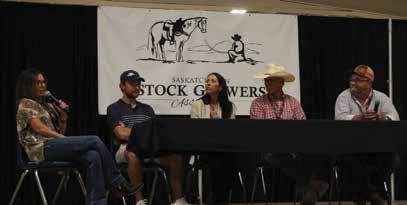


p: 306.757.8523 e: office@skstockgrowers.com w: www.skstockgrowers.com
Plant Species at Risk Found in Sandy Soil
Carolyn Gaudet
There are currently 18 plant species at risk listed on the Schedule 1 of the Federal Species at Risk Act that are located in Saskatchewan, and often, they do not get the same attention as some of our other wildlife species at risk.
Rare plants have disappeared or undergone population declines because of habitat fragmentation, degradation or loss. The few plant species at risk described below are found in similar habitats (sandy soil and dunes); and therefore, have common threats, which include:
• Cultivation of prairie;
• Sand dunes with active, shifting sand become stabilized by vegetation;
• Invasion by woody species, like trees or shrubs;
• Invasive species (leafy spurge, downy brome) displacing the at-risk plants;
• Sand and gravel extraction which removes topsoil and plants;
• Industrial development (oil and gas activities, coal strip mining);
• Urban expansion; and
• Changes to natural processes as certain plants have evolved with grazing, fire, and hydrology cycles.
The following plants are considered endangered or threatened because of the habitat threats listed above, but they also have small localized populations, few occurrences, and restricted distributions. Many of these species are annuals, and their seeds are built to survive in the soil for several years and only germinate when suitable moisture and temperature conditions occur. It is important to maintain native prairie and thereby the seed bank of many native species.
Endangered – Those species facing imminent extirpation or extinction
Small-flowered Sand-verbena is a lowgrowing annual (20 to 50 centimetres), with trailing succulent stems that point
up at the tips, rounded leaves and tiny, whitish-green flowers. The fruit of Smallflowered Sand-verbena has three peachcoloured ‘wings’ that resemble flowers and help with dispersal.
Flowering occurs from May to July. The habitat of a Small-flowered Sand-verbena is slopes and sandy dunes in areas of active or partially-stabilized sand. Known sites of this species are along the South Saskatchewan River, but there is the potential for many other sites to exist.
Threatened – Likely to become endangered if no action is taken to reverse the decline
Tiny Cryptantha is an annual that grows up to 20 centimetres tall, covered in bristly hairs, with smaller leaves closer to the top of the plant. The white flowers are tubeshaped with yellow centers, which bears four seeds called “nutlets,” with the largest of the four nutlets being smooth, while the other three are bumpy texture.
Flowering occurs from late May to early July. The habitat of Tiny Cryptantha consists of dry slopes of river valleys or associated rolling uplands, or terraces in very dry environments. Known sites are on the western extent of the South Saskatchewan River.
Up until 2017, Tiny Cryptantha was listed as endangered, but additional search efforts resulted in a larger known range and population size, which allowed the species to be downlisted to threatened.
Smooth Goosefoot is another annual that grows 10 to 50 centimetres tall and is yellowish-green in colour. The leaves are linear and smooth. Flowers occur in July and grow in dense clusters, widely spaced apart along the stem. The shiny, black seeds are assumed to fall to the ground close to the plant.
The habitat of Smooth Goosefoot is eroded sandy soils at the edges of dunes, blowouts and in stabilizing sand. There is
roughly a dozen known locations along sandy river banks, active dunes and dune edges in the southwestern corner of Saskatchewan.
Western Spiderwort is a perennial that grows from five to 60 centimetres tall. It has a slender stem, grass-like leaves that are partially folded.
Flowers bloom in July and have three deep purple petals with wavy margins, which open in early morning and close by midday. Pollinated flowers produce seed capsules that resemble short pods, with one to six seeds that are ejected a few weeks after flowering.
The habitat of the Western Spiderwort is partially-stabilized sand dunes and steep south-facing slopes and blowouts. Known locations are in the Elbow Sand Hills.
Hairy Prairie-clover is also a perennial that grows to 30 to 60 centimetres tall. The stems are somewhat woody, growing along the ground or rising at an angle. Leaves and stems are densely hairy with surfaces that are soft to the touch.
Flowers bloom in July to late August and are tiny, purple-rose coloured, that grow in dense cylindrical spikes up to 10 centimetres long. Hairy Prairie-clover’s fruit develops as in single-seeded hairy pods.
The habitat of Hairy Prairie-clover is active sand blowouts, and it will tolerate partially-stabilized sandy sites, but some degree of active sand is required. Known locations include sand hills in Pelican Lake and Dundurn.
How can you help?
Many of these species occur on sand dunes with active, shifting sand. When a dune develops sufficient vegetation, it will stop the movement of the sand, leading to stabilization and loss of species plants that require active dunes.
46 | ©BEEF BUSINESS | www.skstockgrowers.com SEPTEMBER 2023 STEWARDSHIP
Luckily, there is an easy fix as light grazing around sand dunes can prevent dune stabilization.
There are a few actions that can be taken by land owners or managers to help plant species at risk:
• Do not cultivate native prairie;
• Prevent the stabilization of sand dunes on your land;
• Continue good range management practices;
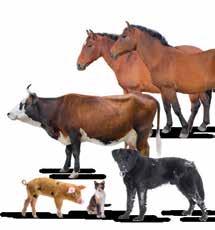
• Manage and prevent the spread of invasive species; and
• Report sightings of rare plants to organizations such as Nature
Saskatchewan’s Rare Plant Rescue at 1-800-667-4668 or the Native Plant Society of Saskatchewan Office Executive Director Chet Neufeld at 306-668-3940.
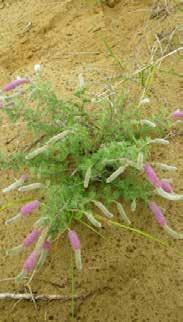



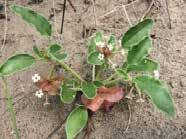
Necropsy
Histopathology
Surgical Pathology
Dermatopathology
Immunohistochemistry
Clinical Pathology
Endocrinology
Bacteriology/Mycology
PCR
Genomics
Parasitology
Serology
Virology
Immunology
Toxicology
47 www.skstockgrowers.com | ©BEEF BUSINESS | SEPTEMBER 2023
Accredited by American Association of Veterinarian Laboratory Diagnosticians (AAVLD); Standards Council of Canada, and CFIA for specific tests. (306) 966-7316 | www.pdsinc.ca PROVIDING A FULL RANGE OF VETERINARY DIAGNOSTIC SERVICES
PRAIRIE DIAGNOSTIC SERVICES INC P D S STEWARDSHIP
Small-flowered Sand-verbena
(Photo by Emily Putz)
Tiny Cryptantha (Photo by Ashley Vass)
Smooth Goosefoot (Photo by Nature Saskatchewan)
Western Spiderwort (Photo by Emily Putz)
B
Hairy Prairie-clover (Photo by Rebecca Magnus)
Saskatchewan Stock Growers Foundation Summer Update
The 2023 summer season has been our busiest yet. With the significant growth of our programs and outreach, we have been working hard to deliver conservation projects across the province and increase awareness of our programs.
Our Range Technician Marika Sherman took on two students this summer to teach them the ins and outs of rangeland assessments. They have been traveling all over the province to complete assessments on both current projects and proposed new projects.

They have logged numerous hours perfecting their plant identification skills while under her supervision. They have had to hone their skills due to the ongoing drought conditions affecting a large portion of the province. The dry conditions make assessments more difficult to finish due to the fragility of native grass once it has dried out.
If you are interested in a project with us, let us know so we can plan our field seasons to accommodate all landowners before running too late into the year when the grasses can become more difficult to assess.
Interest for both our conservation agreements and easements in the last year has increased as we become more well-known and we have been able to sign more agreements to continue our conservation work with the help of landowners.
Mindy Hockley
No project is the same as each landowner has different goals and obstacles to overcome in order to reach their desired results. We have explored agreements that include riparian health outcomes, cross fencing to manage grasslands better and changing grazing strategies to help native grasslands rest and recover.
Being able to work with different ranchers to help find solutions that help increase their grassland health is not only rewarding when it comes to conservation goals, but we get to learn from each rancher with whom we work. We have some exciting conservation projects in the works, so stay tuned for future updates!
To ensure program success, Saskatchewan Stock Growers Foundation (SSGF) enlisted the help of Robert (Bob) McLean with the creation of a Conservation Easement Policy. SSGF General Manager Brant Kirychuk also put together a Conservation Agreement Policy to guide the foundation and our board when new projects come forward for approval.
Both policy documents were ultimately approved earlier in the year and will be used moving forward on projects to ensure conservation goals are met while keeping SSGF’s vision and goals forefront in collaboration with landowner goals.
This fall, we will be running a second round of our Reverse Auction for Native Grassland Restoration. We were able to sign three restoration agreements in the first round, and now are looking
to expand the project to encompass even more acres. If you are interested in seeding native grass within the next year or two, reach out to SSGF and we will stay in touch with program updates.
Coming up in December 2023, we are excited to be co-hosting the Transboundary Grassland Partnership in Swift Current with the help of other organizations. The theme for this year’s workshop is “Native Grasslands: Culture, Carbon and Conservation.”
We will be discussing topics and new conservation strategies that affect grasslands with industry representatives from Saskatchewan, Alberta and Montana, as well as landowners interested in learning more about conservation of native grasslands.
SSGF is still in talks with landowners interested in pursuing a Term Conservation Easement, and we are looking to sign our first official easement right away. These easements take time and negotiation to ensure everyone’s concerns are heard before moving forward.
The feedback has continued to be positive around the program and we are excited to work with conservation minded landowners to protect more acres of atrisk native grasslands.
Since having such a successful spring and summer, we are excited to see what the second half of the year brings. B
48 | ©BEEF BUSINESS | www.skstockgrowers.com SEPTEMBER 2023 STEWARDSHIP
Are you wanting to protect your Native Grasslands with flexibility for the next generation?

Term Conservation Easements allow flexible term lengths while protecting native grasslands from the threat of cultivation. Working to keep ranchers and livestock on the landscape for years to come. Contact the Saskatchewan Stock Growers Foundation to learn more! www.ssgf.ca




communications@ssgf.ca
THE EXECUTIVE
Garner Deobald
President
Hodgeville, SK Phone: 306- 677-7777
Jeff Yorga
1st Vice President Flintoft, SK Phone: 306-531-5717
Kelly Williamson
2nd Vice President Pambrun, SK Phone: 306-582-7774
Chay Anderson
Finance Chair
Fir Mountain, SK Phone: 306-640-7087
Kelcy Elford
Past President Caron, SK Phone: 306-690-5305
Find email contact for the Executive Directors at skstockgrowers.com
SSGA BOARD OF DIRECTORS
DIRECTORS
50 | ©BEEF BUSINESS | www.skstockgrowers.com SEPTEMBER 2023
AT LARGE Chay Anderson, Fir Mountain, SK 306-640-7087 Keith Day, Lacadena, SK 306-375-2934 Gerry Delorme, Assiniboia, SK 306-640-7493 Calvin Gavelin, McCord, SK 306-478-7748 Adrienne Hanson, Langbank, SK 306-421-8538 Lance Hockley, Yellowgrass, SK 306-891-8189 Joe Gilchrist, Maple Creek, SK 306-662-3986 Kelly Lightfoot, Assiniboia, SK 306-642-8977 Miles McNeil, Alameda, SK 306-489-2073 Lee Sexton, Hanley, SK 306-544-2660 Chris Williamson, Mankota, SK 306-478-7036 Kelly Williamson, Pambrun, SK 306-582-7774
CHAIR DIRECTORS Zone 1 - Henry McCarthy, Wawota, SK 306-739-2205 Zone 2 - Karen McKim, Milestone, SK 306-436-4616 Zone 3 - Larry Flaig, Assiniboia, SK 306-266-2070 Zone 4 - Brad Howe, Empress, AB 306-661-0409 Zone 5 - Aaron Huber, Lipton, SK 306-331-0097 Zone 6 - Dave McKenzie, Delisle, SK 306-493-8127 Zone 7- Darcy Moen, Kyle, SK 306-962-3944 Zone 12 - Rod Gamble, Pambrun, SK 306-582-2077 AFFILIATE DIRECTORS Garner Deobald - SK Charolais Affiliate 306-677-2589 Gord Ell - SaskMilk Affiliate 306-535-1922 Kyron Manske - SK Simmental Affiliate 306-267-7530 Marlene Monvoisin - SK Angus Affiliate 306-648-8200 Rob O'Connor - SK Hereford Affiliate 306-550-4890 Ray Rintoul - SK Shorthorn Affiliate 306-917-7805 Gord Schroeder - SK Sheep Affiliate 306-933-5582 Ian Thackeray - Man-Sask Gelbvieh Affiliate 306-861-7687 Jeff Yorga - SK Limousin Affiliate 306-531-5717 APPOINTED DIRECTOR Dr. Andy Acton - Veterinary Advisor, Ogema, SK 306-459-2422 SASKATCHEWAN CCA DIRECTORS Ryan Beierbach, Whitewood, SK 306-532-4809 Lynn Grant, Val Marie, SK 306-298-2268 Philip Lynn, Marquis, SK 306-361-9299 Duane Thompson, Kelliher, SK 306-675-4562 CALENDAR November 2023 Beef Business Advertising Deadline OCTOBER 11 Call Diane at 306 - 716 - 4271 OCTOBER October 11 Beef Business Magazine November 2023 Issue Advertising Deadline October 17 Saskatchewan Irrigation Projects Association Open Mic Outlook, SK October 23 - 27 Cleanfarms’ Unwanted Pesticides and Old Medications Events 20 locations in SK October 31 - November 3 Stockade Round-Up Lloydminster, SK NOVEMBER November 1 - 4 Yorkton Harvest Showdown Yorkton, SK November 13 - 15 MFGA Regenerative AG Conference Brandon, MB November 20 - 25 Canadian Western Agribition Regina, SK DECEMBER December 1 - 2 Rancher’s University Moosomin, SK December 6 - 7 Transboundary Grassland Workshop Swift Current, SK December 7 Back to Business Moose Jaw, SK December 8 Back to Business Saskatoon, SK
ZONE
Forage Probes Are Available
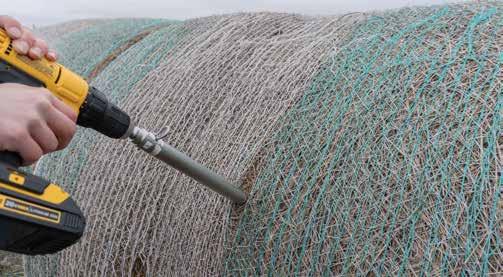
Feed testing is the only way to determine the nutritional quality of your livestock feeds. Forage probes are available at Ministry of Agriculture regional offices for producers wanting to test their forages.
Specialists can assist with this process and in development of winterfeeding programs. Contact the Agriculture Knowledge Centre for more information at 1-866-457-2377.
51 www.skstockgrowers.com | ©BEEF BUSINESS | SEPTEMBER 2023 Allen Leigh 54 Apollo Machine & Products Ltd. 54 ArcRite Welding 53 Austin's Saddlery 52 Bannerlane Horned Herefords 54 Bauma Lighting 1 Beef Smart Consulting 53 Bud Williams 54 Cargill Animal Nutrition 53 Cows in Control 53 Cowtown Livestock Exchange Inc. 54 Cozy Caps 52 Cramer Ag Cow Pellets 52 Ducks Unlimited Canada 3 Edward Jones 52 ENDOVAC-Beef 2, 33 Frostfree Nosepumps 53 Gem Silage Products 53 Great Plains Realty 52 Head for the Hills Shorthorns 52 Hi-Hog Farm & Ranch Equipment 11 John Brown Farms 54 Johnstone Auction Mart 54 Kramer Trailer Sales 53 Manitou Maine-Anjou 54 Man Sask Gelbvieh Association 53 Maple Creek Seed Supply 54 Masterfeeds 53 Milligan Biofuels 32,52 MNP 43 N.M. McMahon CPA 52 New Vision Agro 54 New-Life Mills 53 Nick's Service Ltd. 7 Norheim Ranching 56 OLS Tubs 4 Jeremy Patzer, Member of Parliament 41 Performance Seed 53 Prairie Diagnostic Services 47, 52 Quick Look Back 54 Ranchland Livestock Supplies 52 RE/MAX Yorkton, Shawn Pryhitka 53 Saskatchewan Angus Association 39,54 Saskatchewan Charolais Association 13 Saskatchewan Livestock Finance 16 Saskatchewan Ministry of Agriculture 51 Saskatchewan Stock Growers Foundation 49 SASKTIP Inc. 15 Sheppard Realty 54 SunStream Solar 42 Syngenta 29 Target Cattle Concepts 25 True North Foods 8 Union Forage 26 Vetoquinol 17 Weyburn Livestock Exchange 30 Young's Equipment 27 Young Dale Angus 54 Zoetis 55 ADVERTISER INDEX saskatchewan.ca/livestock

















52 | ©BEEF BUSINESS | www.skstockgrowers.com SEPTEMBER 2023 Member – Canadian Investor Protection Fund Tyler Knibbs Financial Advisor 461 King Street Unit 3 Estevan, SK S4A 1K6 306-634-4870 www.edwardjones.com Know your goals so you can choose your investments. Consigning to Northern Exposure Sale Cattle also for sale by private treaty Dr. Christine Ewert Hill | Dr. Clarke Hill christine.ewert@gmail.com (306) 452-7867 (C) • (306) 452-3803 (H) Redvers, SK S0C 2H0 HEAD FOR THE HILLS SHORTHORNS Custom Fabricating & Manufacturing Specializing in solar powered water troughs Custom Chutes | Hay & Bunk Feeders | Custom Livestock Equipment Maple Creek, SK Call John @ (306) 662-8098 GROWING WITH YOU Rations, supplements & minerals Call Bruce at 306-229-0302 Locally sourced grains & commodities Call Wes at 306-229-5206 www.willowmills.com • AgriInvest and AgriStability • Financial Statement and Tax Preparation • Bookkeeping and Payroll • Tax Planning and Consulting • CRA Assistance • Estate and Trust 604 Government Road South, Weyburn SK S4H 2B4 PH: 306.842.5344 | FX: 306.842.5345 McMahon@McMahonCPA.ca $80 CAN GET YOUR AD HERE (306) 757-8523 PROVIDING A FULL RANGE OF VETERINARY DIAGNOSTIC SERVICES Accredited by American Association of Veterinarian Laboratory Diagnosticians (AAVLD); Standards Council of Canada, and CFIA for specific tests. (306) 966-7316 | www.pdsinc.ca PRAIRIE D AGNOSTIC SERVICES NC P D S • Necropsy • Histopathology • Surgical Pathology • Dermatopathology • Immunohistochemistry • Clinical Pathology • Endocrinology • Bacteriology/Mycology • PCR • Genomics • Parasitology • Serology • Virology • Immunology • Toxicology Mike Janostin, Owner/Broker Shelly Pobran-Janostin, Associate Broker Serving Farmers & Ranchers Across Saskatchewan! #3-3815 Thatcher Ave, Saskatoon, SK | 306-481-5574 info@greatplainsrealty.ca | greatplainsrealty.ca Connect With Us to Learn More About Buying or Selling! Betty Wyatt Box 27, Wawota, SK S0G 5A0 Cell: 306-577-7182 Main:306-739-0020 cozycaps@outlook.com | www.cozy-caps.com COZY CAPS FOR CALVES Ear protection for newborn calves NEED FEED? 306-520-3553 www.cowpellets.ca $80 CAN GET YOUR AD HERE (306) 757-8523
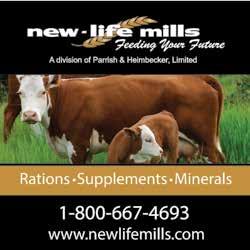

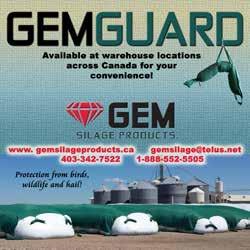



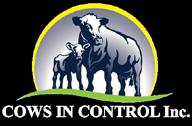







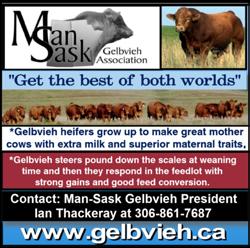



53 www.skstockgrowers.com | ©BEEF BUSINESS | SEPTEMBER 2023 SIMPLE & RELIABLE YEAR-ROUND LIVESTOCK WATERING No power! Multiple pumps for large herds Saves money Saves time 100% sustainable • • • • • Frostfree Nosepumps Ltd. 866-843-6744 | frostfreenosepumps.com Animal Nutrition Programs designed to achieve optimum health, results & profits – delivered with service beyond the competition. “Masterfeeds is the only brand we trust. It just works.” MASTERFEEDS CUSTOMER SASKATCHEWAN: Humboldt / 1-306-682-2668 Regina / 1-306-721-2727 Saskatoon Premix / 1-306-384-2144 Swift Current / 1-306-773-3001 Phone 403-775-7534 www.cowsincontrol.com MANAGE RISK We’ll help you get the best return for your livestock. CONSUL TING INC. Sma rt B eef • Forage & Feed Analysis • Ration Formulation • Mineral & Supplement Formulation Balanced by BeefSmart Unit 108 4002 Arthur Rose Ave, Saskatoon beefsmart.ca • 306-229-0675 • info@beefsmart.ca Increasing efficiencies and improving profitability of cow-calf, backgrounding, feedlot, bison and sheep producers through nutrition consulting in the prairies. Connect with us today. • Forage and Pasture Systems • Herd Trace Mineral Status Assessments 10029 Marquis Ave., North Battleford, SK Animal Nutrition Manufacturers of Livestock Feeds ORDER DESK 1.800.661.9929 WWW.CARGILL.COM LIVESTOCK , CAR HAULERS AND FLAT DECKS Financing & Leasing aVaiLaBLe kramertrailersales.com We have your hauling needs covered. Check out our website to see what we have in stock or call 1-306-445-5000 and we can discuss your trailer needs. Custom orders available! GOOSENECK, BUMPER PULLS 15’, 20', 25' LENGTHS Contact: Man-Sask Gelbvieh President Ian Thackeray at 306-861-7687 Celebrating 50 years of Gelbvieh in Canada A Farmer Helping Farmers Realtor Ag Specialist 269 Hamilton Rd, Yorkton, SK S3N 4C6 SHAWN PRYHITKA spryhitka@remax-yorkton.ca 306.621.9798 Your AD could be here! Call now! 306-757-8523
MAPLE
Pricing on all Perennial Forages





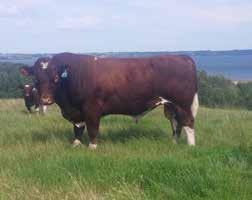

Annual February Sale










54 | ©BEEF BUSINESS | www.skstockgrowers.com SEPTEMBER 2023 Helen Finucane phone: 306-584-2773 cell: 306-537-2648 Carlyle, SK Manitou Maine-Anjou Bulls (since 1970) We raise the real Maine-Anjou cattle! Call Us You’ll be Glad You Did! manitoumaineanjou.ca garysandygraham@gmail.com Marsden, SK | 306.830.0883 NEW VISION AGRO Box 479 Hague, SK S0K 1X0 email: newvisionagro@sasktel.net Dealer & Distributor For: - Jay-Lor Vertical Feed Mixers - Cargill Rite Now Minerals - Baler twine, netwrap, silage bunker, PH: (306) 225-2226 FX: (306) 225-2063 www.newvisionagro.com Check with us before you buy! covers, plastic wrap, Grain Bags 2502 Millar Ave, Saskatoon 306-242-9884 or 877-255-0187 apm@sasktel.net www.apollomachineandproducts.com • ROLLER MILLS Electric or PTO models ~ 10 sizes available ~ Increase the nutrition value of your feed! ~ Manufactured in Saskatoon • SILAGE COVERS & GRAIN BAGS Machine & Products Ltd. We regroove roller mill rolls - most brands Visit www.stockmanship.com or call 417-719-4910 for more information. We have new books: Smile and Mean it: the Bud & Eunice Williams Story Stockdogs: Partners and Friends 3 2 8 7 Q u a n c e S t r ee t, R egin a , SK OFFICE 3 0 6 . 3 5 2 .18 66 CELL 306.530.8035 shepp a r d r e a l t y. c a Farm & Ranch Real Es It’s what we do. Rob & Joanne Bannerman, Livelong, SK Home: 306 845 2764 Cell: 306 845 7790 bannerman1964@icloud.com
&
heifers Cowtown Livestock Exchange Inc. Maple Creek, SK Regular Sales every Tuesday @ 10:00 a.m. Locally Owned & Operated Call for info on Presort & Other Sales Phone 306-662-2648 Toll Free: 1-800-239-5933 CT www.cowtownlivestock.com
Two year old bulls
bred
CREEK SEED SUPPLY NATIVE GRASS SEED FOR SASKATCHEWAN
Ltd.
McDougald
or Call 306-662-7636 rmcdougald@xplornet.ca
Arranged to your location All types of commercial and purebred livestock auctions and farm sales. Wash rack facilities for livestock Wayne or Scott Johnstone Box 818, Moose Jaw, SK 306-693-4715 (Bus) Fax 306-691-6650 www.johnstoneauction.ca CAMERA SYSTEMS FOR FARM & RANCH JOHN SMORODEN (250) 417-5412 info@quicklookback.com 1075 - 26th Ave. South Cranbrook, B.C. V1C 6Y7 www.quicklookback.com A SSOCI AT ION SA S K AT CH E WA N o ce @saskatchewanangus.com cdnangus.ca/saskatchewan-angus-association 306-537-1518 Trusted Quality, Trusted Support, Trusted Service! 545 Assiniboine Ave, Brandon, MB I TF: 1.866.289.8164 T: 204.728.8878 I info@allenleigh.ca COWCAM Wireless & IP Systems Makes your calving €easier, safer & more profitable! • Smartphone compatible • Save more calves • Stop disturbing them and check more frequently www.precisioncam.ca Cam Allen Leigh Security & Communications Ltd.
Raystock Holdings
Ray
Text
Delivery
MANAGE HEALTH DATA.
Performance Beef simplifies health data capture making it easy to:


Track pen or pasture treatments
Record health costs without double entry
Access animal health history
Monitor health costs and performance data
7 PRODUCERS.
1 ANIMAL HEALTH PROGRAM.
SCAN TO SEE HOW THEY USE IT >>

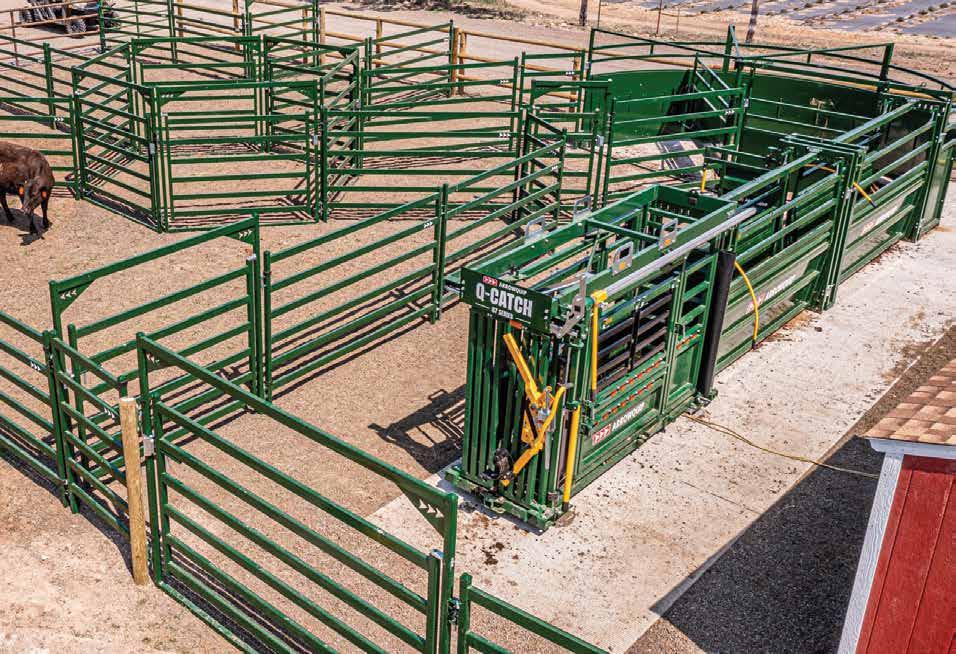
SASKATOON • MOOSE JAW • LLOYDMINSTER NEXT LEVEL CATTLE HANDLING NORHEIMRANCHING.COM 1.306.955.1350




 Matt Pearce, Pearce Cattle Company
Matt Pearce, Pearce Cattle Company























































































































































